Portfolio for USYD works (2023 - ), some illustration/personal projects and other documentation (gallery visits, studies, etc.), pictured above is my sculptural work "Light Materialisation: Neurology" (2022)
Don't wanna be here? Send us removal request.
Text
To the artists who enjoy Lux/Mr Ring-A-Ding: I need your help please!
I’m currently working on drawing some proper Lux/Mr Ring-A-Ding character studies and I’m a little stuck on how to draw his torso and his tailcoat.
Here’s my first attempt during @velka-art’s Magma hang-out last month for reference (please ignore the missing shirt error) - btw I’m pretty happy with how I did the face and hair even if it needs a couple of tweaks:
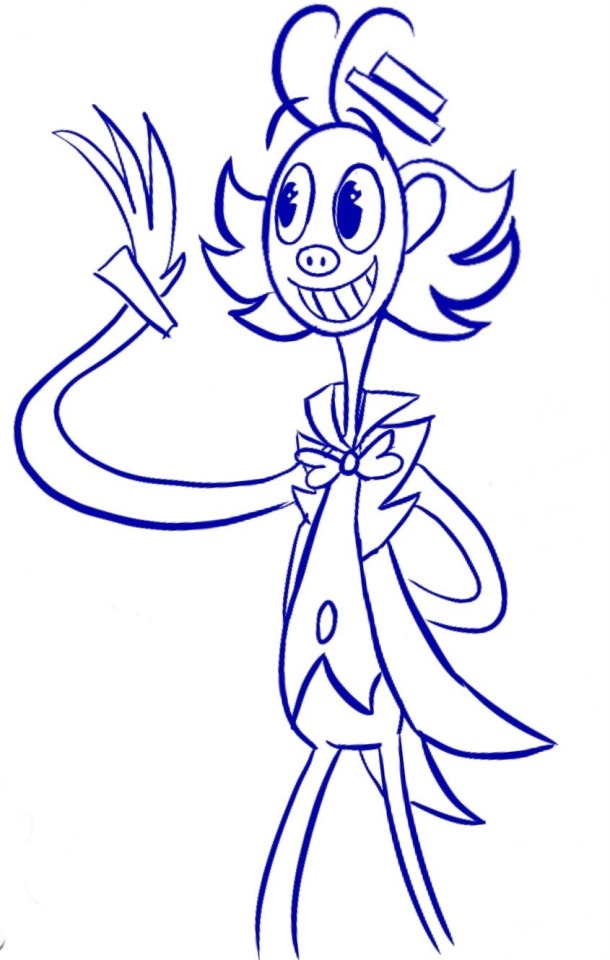
Personally I envisioned his torso to be pear-shaped in my artstyle (narrow chest with a chubby/round stomach), and I’m a bit stuck on how to draw the tailcoat (and its lapels) in a way that retains its iconic shape/s without being too distracting when paired with his waistcoat, shirt collar and bow tie.
If anyone can please reblog/comment with any tips specifically for the torso and tailcoat, that would be great! 👍🏻
(Yes, I’ve had a look at the clips and concept art of him way too many times for reference - and I’m still stuck. 🙃)
#miscellaneous#doctor who fandom#doctor who lux#doctor who#lux imperator fanart#lux imperator#mr ring a ding#mr ring-a-ding#mr ring a ding fanart#minami rambles
13 notes
·
View notes
Note
(Proceeds to reblog/repost this for later)
The Maestro guide is definitely helpful, thank you very much!
Love your art of the Pantheon of Discord! :D
(They may or may not have contributed to inspiring to make my own AU surrounding these gods - specifically Lux, Toymaker and Maestro - and two of my own fan OC gods. Shh!)
Only if you want to, have you considered exploring the dynamics between Lux and the other members through illustrations/comics (if not, through writing)? Regardless, I'd love to see more of the funny toon god (who stole my heart, waltzed into my brain unannounced and stayed there without me even questioning it)! ✨💙🎞🐜
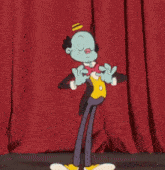
(Also do you have any tips on how an earth to draw Maestro and their iconic piano outfit? I only ask bc I want to draw Maestro for the AU, but the details both confuse and terrify me. 🤣😅 Please and thank you!)
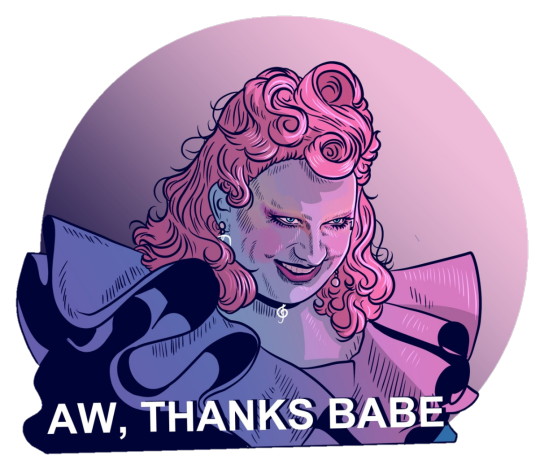
(you get the first glimpse of my work in progress set of Maestro reaction pics ahah)
I saw your AU, actually, it's so cool!! Extremely glad that I have inspired that in any way, eheh. I do plan to have more of Lux appearing in the Polycule AU, but he is not the focus of it- so it will definitely be more about how the two main gods of my AU (Maestro and Toymaker) perceive their relation with him. For now, I kinda hinted that Toymaker finds him deeply annoying (perhaps out of jealousy, for light definitely was something he craved in the dark), which is not a resentment Lux is sharing at all. I also think Maestro would find him cool to hang around, but would probably get frustrated with his constant energy if they were forced to deal with him for too long! They do be liking their quiet fr fr
Now, for the dreaded piano outfit!! What might help you make sense of it is actually the harmony of the shape- it's all about triangles. An very badly made example:

There's also the piano key lapel of the vest, triangles, and the hair, triangles. There's a lot of details, but it's very organised! You can rely on the many lines, too, so you won't get lost in the fabric- like the lines on the vest. You can add the piano keys on every white surfaces, which are basically the inside of the coat, and it will already be pretty recognisable !
There's another triangle, also, not visible on the first pic, which goes reversed from the one of the train:

It contributes to give them a very hourglass shape from shoulders to train, and interestingly deconstructs it with the added form triangle around the hips, following the shape of the shoulder to the waist!
For the jewelry, I'm not great at it- so I've taken to make little circles to contour it. Like this:
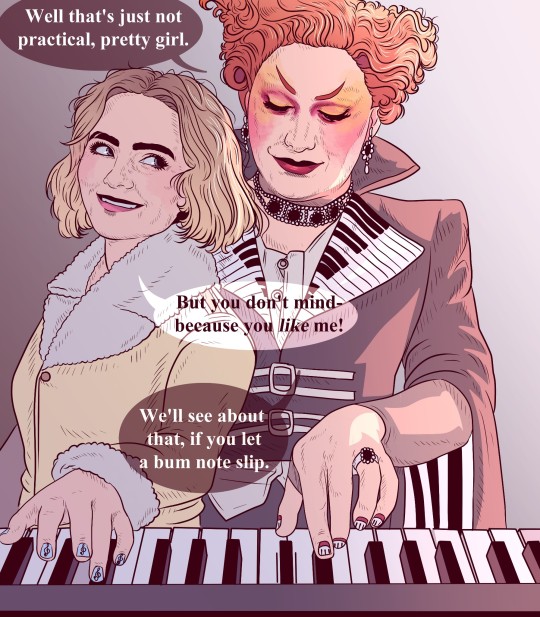
If you think about it, don't hesitate to add the partition tattoo on their neck- it really serves the vibe!
I hope this helped 🙏
#doctor who#pantheon of discord#doctor who au#reblog#thought i'd reblog this to look at the “maestro drawing guide” later#those tips will def save me a lot of pain#also thank you for the kind words about my WIP Pantheon of Gods AU 🥺💖 - my schedule may be weird atm but expect more in the future 🤞🏻#miscellaneous
19 notes
·
View notes
Text
Hello there, Whovians and Lux Imperator/Mr Ring-A-Ding enjoyers!
(I wanted to make this post sooner, but life got busy and I'm currently recovering from being sick as of writing this so oh well...)
I have two projects to mention that you guys may be interested in, one is currently a WIP and the other is more an interest check for said project… (if you want to just look at the latter, feel free to scroll past the other project I talk about in this post)
Project 1: Doctor Who AU (WIP)
A couple of you may be aware of an AU that I’ve been inspired to create since learning more about the Pantheon of Discord over the last few months (specifically Lux but also the rest of who I like to affectionately nickname “The Giggle Trio” (Toymaker and Maestro)).
While it is still a WIP, I want to confirm/clarify a few important details for now:
I first came up with the OCs (and some of the story) for this AU prior to the release of the episodes “Wish World” and “The Reality War”.
Therefore, this AU will NOT reference those episodes, but rather will be set in a timeline where the 15th Doctor is still around (but has long since parted with Belinda who’s living a happier life).
I have two gods (fan OCs) in the works: Acoíris (God of Art) and Seimei (God of Biological Life)
In terms of the canon gods who are featured in the story, the “Giggle Trio” will be front and centre (yes, there will be a tad more focus on Lux, his character and his relationships with the other gods (both canon and fan OCs) bc I’m a little biased, shush!).
Sutekh will be mentioned several times - especially in relation to Seimei - but he won’t make a physical appearance.
The story will take place in the present time (just in different countries), and will be split into two parts (one focusing on Acoíris and one on Seimei).
Yes, I will also have human fan OCs too…
Also I want to send a quick thank-you to:
@starleska for their posts explaining the lore of the Pantheon, which I seriously appreciate (plus said posts got me intrigued about the potential interactions between the gods)!
@modmad and @janus-cadet for their own DW AU projects inspiring my own AU.
@velka-art and a few others for reading/seeing my rough designs and WIP AU ramblings during the Lux/Mr Ring-A-Ding Magma hang-out a couple of weeks ago.
ROWS 1-2: A couple of out-of-context colour keys (and the grey-scale versions to practice values in doing concept art) for certain scenes in the AU

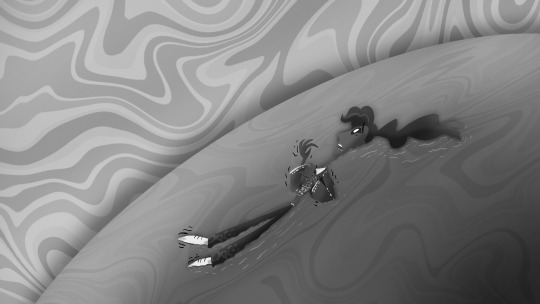


ROWS 3-4: Doodles from @velka-art’s Magma hang-out featuring rough designs/doodles of my fan OC gods (btw some of the drawings of Lux/Mr Ring-A-Ding are hers)

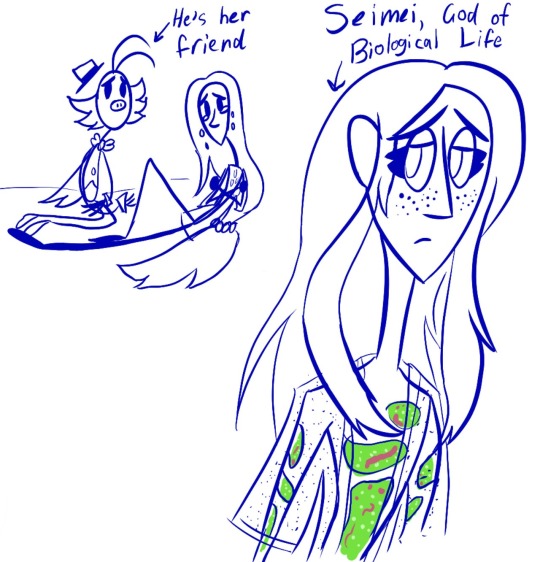

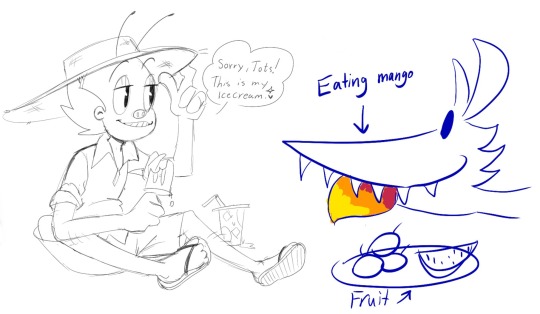
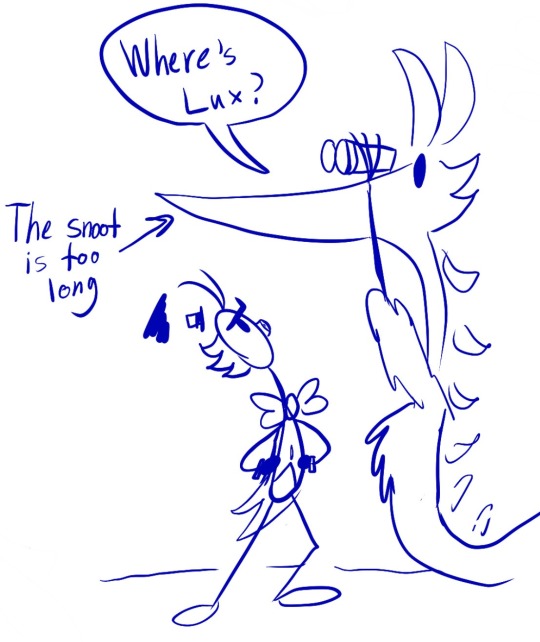
Project 2: Interest check for potential Lux/Mr Ring-A-Ding fan collab artbook
I’ve had this idea in my mind for a while, and decided to put an interest check here… ✨💙🎞️
Please note that me actually being able to organise it all hinges on my ability to sort out my other priorities - including another artbook fan collab (specifically a Portal one - @portalmakingscience) I’m organising currently.
And while I may confirm the specific details later, it’ll be a smaller, less ambitious (FREE TO ACCESS) artbook collab compared to my Portal one (plus I hope it’ll be something for both Whovians and non-Whovians to enjoy)!
#miscellaneous#personal projects#doctor who#lux imperator#mr ring a ding#doctor who fandom#fandom zine#doctor who lux#mr ring a ding fanart#doctor who fanzine#doctor who au#doctor who oc
15 notes
·
View notes
Text
Applications for a collab project I'm organising are currently open!
Artist applications are now open!
(Please reblog/share to spread the word)

Linked below is a Google form if you are interested to to apply as an artist contributor for the collab artbook project:
Please read the rules carefully before applying.
Artist applications will be open from today (April 19th) to July 5th!
Wishing all the Portal fandom artists out there the best of luck! 💙🧡🎨🤖
#fandom zine#fandom collab#portal au#portal fanart#portal valve#portal#portal 2#reblog#miscellaneous#personal projects
106 notes
·
View notes
Text
Material Research 3.4: Pierre Huyghe's "UUmwelt" exhibition (2018-2019)
Material research: Why drawn to this work?
I'm drawn to this work primarily for reasons similar to the ones I stated when discussing Marshmallow Laser Feast's installations.
Huyghe, like Marshmallow Laser Feast, abstracts the fluid nature of biology through sensory experiences and digital technology.
Material research: About the work
UUmwelt is a multimedia exhibition created by French artist Pierre Huyghe and displayed throughout the south gallery in London's Serpentine Gallery (2018-2019).
The name originates from the idea of 'Umwelt' (coined by German biologist Jacob von Uexküll as a term describing the unique way each organism perceives and interacts with the world depending on their biology).
The exhibition consisted of the following:
Digital films (displayed on LED screens) made of footage created from deep image reconstruction, a process where images are reconstructed from fMRI brain activity.
Live flies, which have allowed to reproduce, grow and fly within the central gallery.
Synthetic fragrances, inspired by the concepts of "human", "animal" and "machine".
Sensors that changed certain aspects of the exhibition (the frame rate of the films and the type/intensity of the fragrances) depending on changes in humidity, light and temperature in the gallery.
This exhibition explores the idea of speculative evolution occurring within the living/non-living intelligences and natural/digital environments.
"Even only as reconstruction, to capture the life of human and artificial imagination, by generating infinite possibility of its appearance." - Pierre Huyghe
Material research: How does it link to other artist/theory research?
While investigating and reflecting on the idea of "'real'/faithful vs. abstract representations" of nature and biology, I became intrigued by artworks that explored the overlaps between these two forms of "representations" (e.g. the works of Anicka Yi and Marshmallow Laser Feast).
Additionally, the material approaches in this exhibition align with ideas mentioned in the readings by Giovanni Aloi and John Charles Ryan - as well as Aloi's interview with Matt Collishaw.
Installation shots
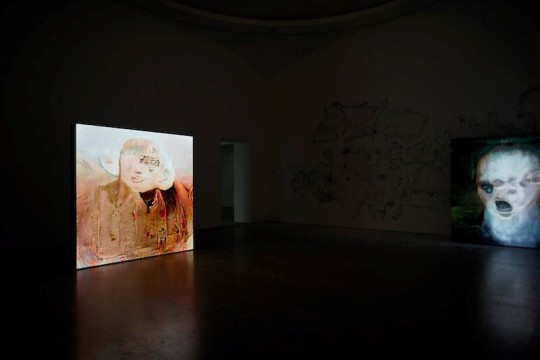
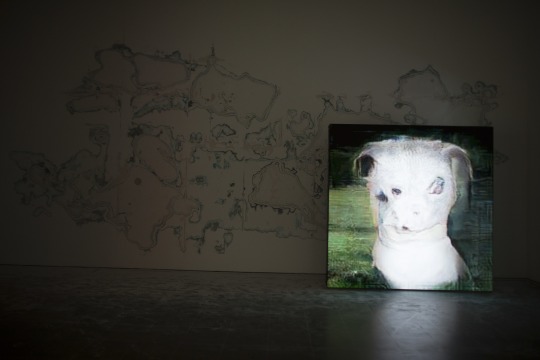
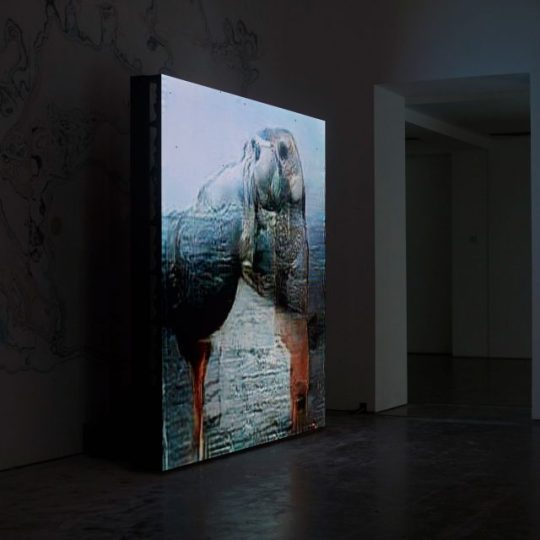









youtube
0 notes
Text
A quick intro/run-down of The Art of Making Science: A Portal Fandom Collab...
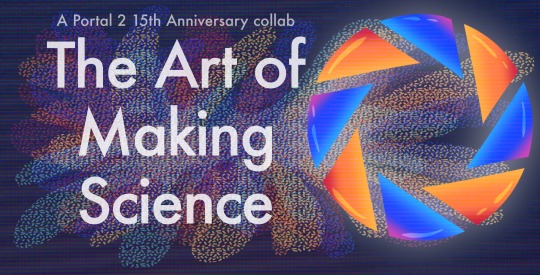
Firstly, who are you?
Hello there, my name is Minami!
Some of you may know me for a lot of different things (fandom or otherwise) that I love making drawings and other creative projects about.
I'm currently on Insta, Tumblr, Cara and Vimeo if you want a peruse of my LinkTree:
I have been in the Portal fandom since 2020, creating fanart of some of the AUs and canon characters. I am also developing a biology-centric Portal AU of my own, Portal: Biologica, that I hope to share with the rest of the world very soon.
What is "The Art of Making Science"?
A collaboration project between several artists in the Portal fandom, including myself.
As a tribute to Portal 2's 15th anniversary next year (April 2026), it is an opportunity to celebrate both the canon games and how they inspired the AUs, reinterpretations, and fan-mods (e.g. Portal Stories: Mel) many know and love!
The project is intended to be accessible to all, and will therefore be a digital printable artbook that you can download for free from my LinkTree!
Why this collab project?
Since Portal 2's 15th Anniversary is in April 2026, I want to contribute a love letter of sorts to these games and their wonderfully-creative fandom.
Lately, I've also been feeling a bit sad over the current state of the fandom:
My fellow artists and friends distancing themselves from the fandom and/or their AU projects.
AU projects (that have long since concluded or been abandoned) falling into obscurity, with a few that were almost considered "lost media".
A few individuals being incredibly hostile towards other people's perspectives, using "canon" to discredit what fandoms are intended to be: places of community and creativity.
Therefore, I hope for this project to bring together members of the fandom, both past and present.
Regardless of whether you're participating in the project or you're just following its development, I hope you all enjoy the artbook, both in its creation and upon its public release!
Project Timeline (may be subject to change)
APPLICATIONS: 19th April-July 5th 2025
FINALISING THE LIST OF CONTRIBUTORS AND COMMUNICATING TO APPLICANTS: July 6th-July 15th 2025
ARTISTS WORKING ON CONTRIBUTIONS (ESTIMATE): Mid July-Late November 2025
ME WORKING ON DESIGNING PROMO BIOS AND FINAL DIGITAL ARTBOOK (ESTIMATE): Early December 2025-Late February 2026
PUBLIC TUMBLR RELEASE OF PROMO BIOS FOR CONTRIBUTORS (ESTIMATE): Early March-Early April 2026 (TBC - will depend on the actual number of final contributors)
PUBLIC RELEASE DATE FOR ARTBOOK (TBC): 18th April 2026
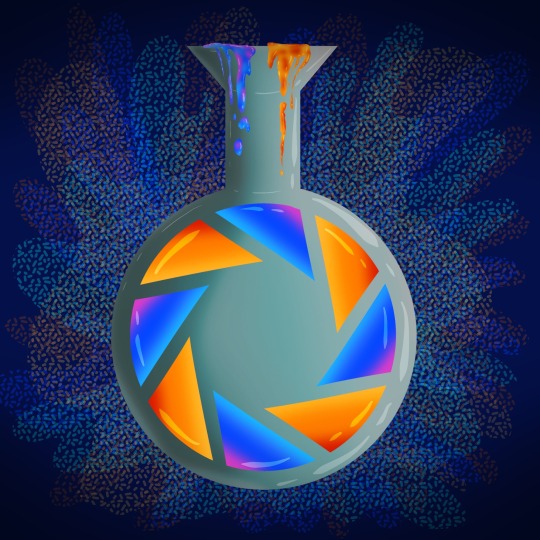
#portal 2#fandom zine#portal au#portal fanart#fandom collab#portal#portal valve#personal projects#miscellaneous#reblog
22 notes
·
View notes
Text
Artist applications are now open!
(Please reblog/share to spread the word)

Linked below is a Google form if you are interested to to apply as an artist contributor for the collab artbook project:
Please read the rules carefully before applying.
Artist applications will be open from today (April 19th) to July 5th!
Wishing all the Portal fandom artists out there the best of luck! 💙🧡🎨🤖
#fandom zine#personal projects#fandom collab#portal 2#portal au#portal fanart#portal#portal valve#miscellaneous#reblog
106 notes
·
View notes
Text
Happy Birthday, Portal 2!
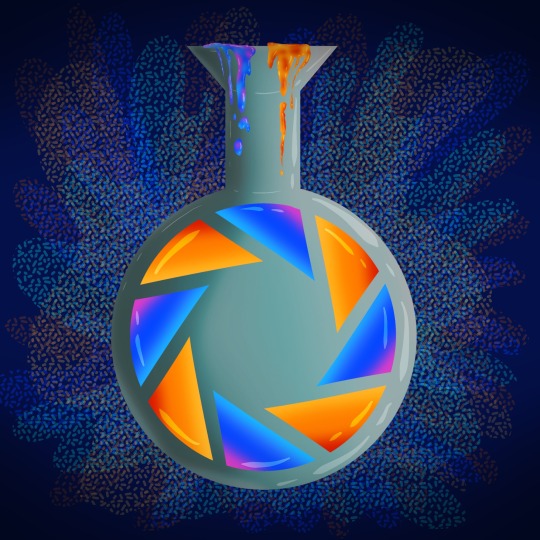
(P.S. Tomorrow morning, artist applications will open so keep your eyes peeled!)
29 notes
·
View notes
Text
Hello, Portal fandom! (2)
Recently, I did a poll for a Portal fandom zine/collab to celebrate Portal 2's 15th anniversary next year.
Well, the people have certainly spoken... ;)

With this in mind, I may or may not announce something in a week so have two teasers in the meantime.


#personal projects#fandom collab#fandom zine#portal au#portal fanart#portal 2#portal#miscellaneous#reblog
13 notes
·
View notes
Text
Material Research 4: Animating a grevillea monoprint (1.4.25-15.4.25)
Notes: Aims of this material experiment
I wanted to explore the idea of translating the tactile imprints from one of my monoprints into digital 2D animation - perhaps I can merge the two mediums together?
This test was inspired by the Beauty Rich and Rare exhibition, Marshmellow Laser Feast's film/VR installations, and Christa Sommerer and Laurent Mignounneua's digital installation Eau de Jardin (2004).
Notes: The materials and process
Animation program: Procreate
For one of the frames, I traced the strokes in one of the grevillea monoprints.
Before colouring, I created rough colour swatches (see below).
16% Gaussian Blur for blending the colours
Brushes used (to mirror the textures of the original ink imprint): Inka and Dry Brush
Frame rate: 11 FPS
Notes: Reflection and observations
While I felt that more frames could have been added for a more fluid motion, I do like how I approached the textures, shapes and colours.
Giving life to a static medium = pulsating/"blossoming" animation?
Perhaps digital animation could be paired with other mediums (printmedia, scent, sound, etc.)?
Colour Swatches with Reference Photo (inspired by that segment from Beauty Rich and Rare)

Comparison between original monoprint (left) and traced frame (right)
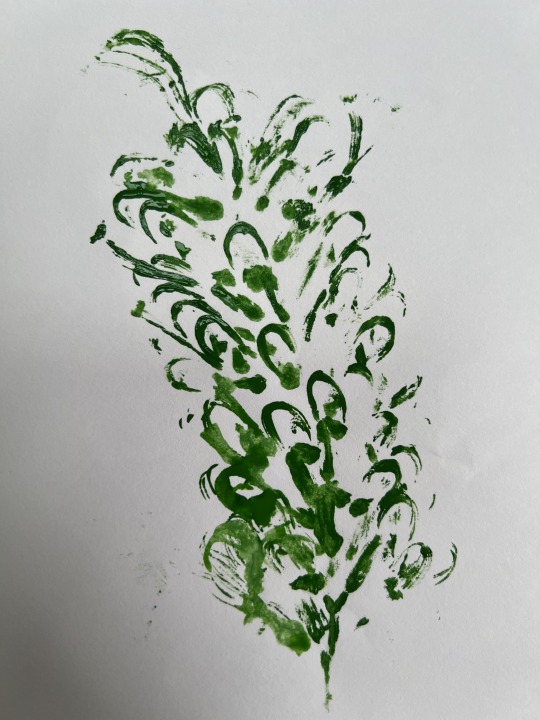

Final Animation Experiment (please note that one of the frames had a colouring error)
#sca projects#aa hons project herbasensorium#aa sca hons research#aa sca hons material experiments#aa sca hons process documentation
2 notes
·
View notes
Text
Material Research 3.3: Marshmallow Laser Feast's "In the Eyes of the Animal" (2015)
Material research: Why drawn to this work?
I am drawn to this work because of its abstract approach to natural/botanical art.
Rejecting human-centered objectivity (i.e. how humans ordinarily perceive the natural world), the audience is given an opportunity to sense woodland plants and their surrounding environment (vision, sound, smell and vibrations) through the "perspectives" of animals.
Material research: About the work
In the Eyes of the Animal is a VR multi-sensory film installation created by the artist collective Marshmallow Laser Feast, which draws from the idea of 'Umwelt' (coined by German biologist Jacob von Uexküll as a term describing the unique way each organism perceives and interacts with the world depending on their biology).
The VR film itself is split into four chapters, each one showcasing an abstract sensory 'perspective' unique to a specific animal from the abstract sensory 'perspective' unique to a specific animal from the Grizedale Forest (Northern England):
Mosquito (Chapter 1) = It is able to perceive the world through levels of carbon dioxide.
Dragonfly (Chapter 2) = It navigates the world through flight (vibrations) and expansive colour vision.
Frog (Chapter 3) = It has excellent night vision, the ability to reactively detect and catch prey, and vocal communication through croaking (sound and vibrations).
Owl (Chapter 4) = Due to its fixed tubular eyes, it has detailed depth perception and distance vision, but poor peripheral vision. Its diverse vocal communication ranges from hoots and whistles to screeches and cooing, but you cannot hear a flying owl due to the structure of its wing feathers.
Multiple technologies (Lidar/CT scans, photogrammetry, real-time 360° camera footage translated into VR, etc.) were used to create the unique visual styles of the film, with soundscapes (which included field recordings of the forest itself), scents (inspired by smells of the forest itself) and vibration backpacks.
Material research: How does it link to other artist/theory research?
I came across this installation while reading Chapter 1 of Giovanni's Botanical Speculations. It was presented as one of many examples of contemporary artworks that was removed from the anthropocentric objectivity (typically of the scientific kind) associated with botanical art.
Similar to the biofeedback works of Christa Sommerer and Laurent Mignounneua, Marshmallow Laser Feast merges digital technology with plants to recontextualise our interactions with nature.
In the Eyes of the Animal (2015, VR film installation with real-time film, sound, haptic vibrations and scent): Screencaps

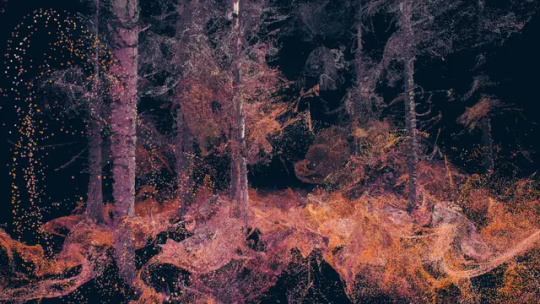
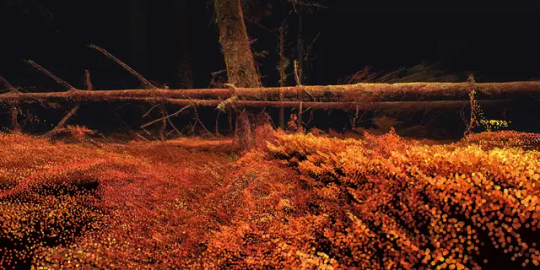
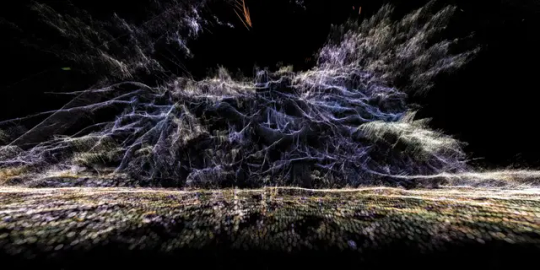
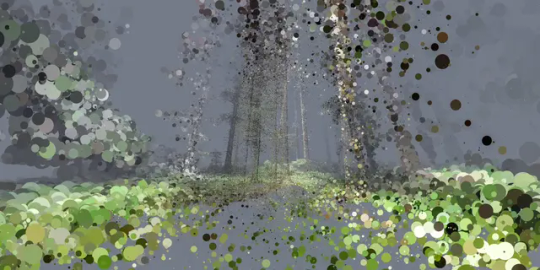
Row 1: "Menu screen", Chapter 1 - Mosquito, Chapter 2 - Dragonfly
Row 2: Chapter 3 - Frog, Chapter 4 - Owl
In the Eyes of the Animal (2015, VR film installation with real-time film, sound, haptic vibrations and scent): Installation Shots with VR headsets and vibration backpacks
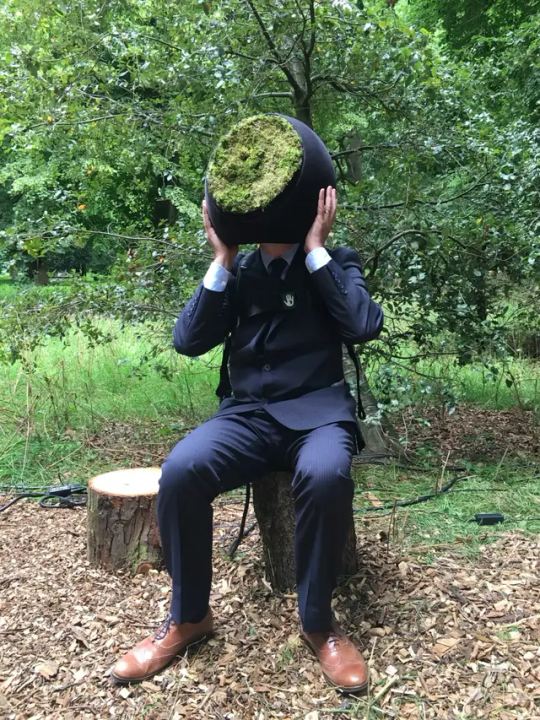
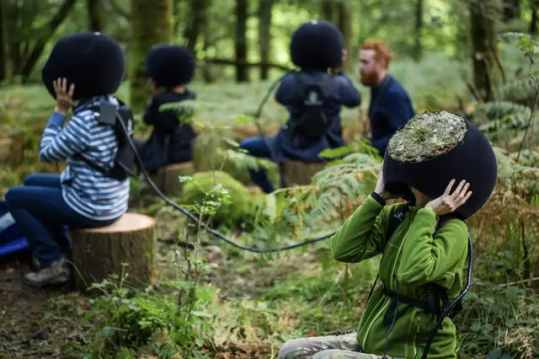
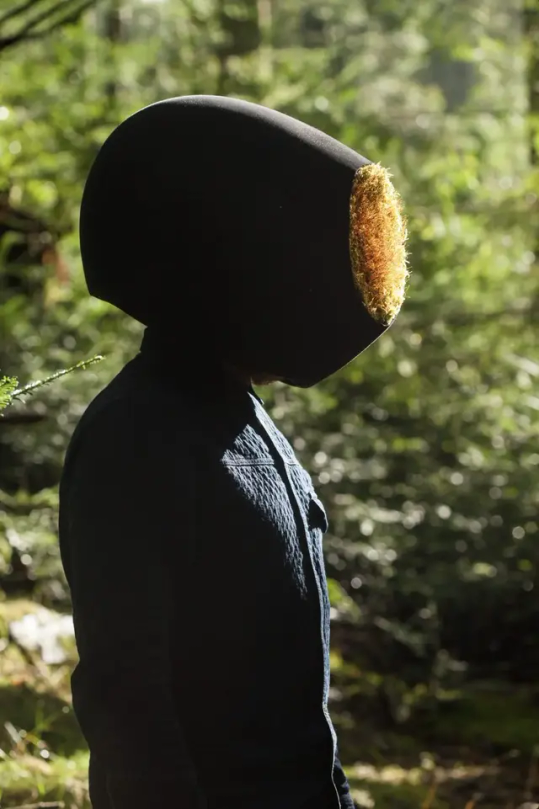
youtube
Material research: Notes on other works
Most of Marshmallow Laser Feast's other works abstract biological processes, organisms and phenomena through digital film/video technologies and soundscapes.
Evolver (2022) = Oxygen in the air travelling through the respiratory and cardiovascular systems
Sanctuary of the Unseen Forest (2022) = A Ceiba pentandra tree, its internal systems (i.e. phloem and xylem), the surrounding air particles, and its natural environment in the Columbian Amazon rainforest
Seeing Echoes in the Mind of the Whale (2024) = The sonic communication produced by cetaceans (bottlenose dolphins, blue whales and sperm whales) and the visual/sonic environment of the ocean biosphere
Other works: Evolver (2022, VR film installation with sound)
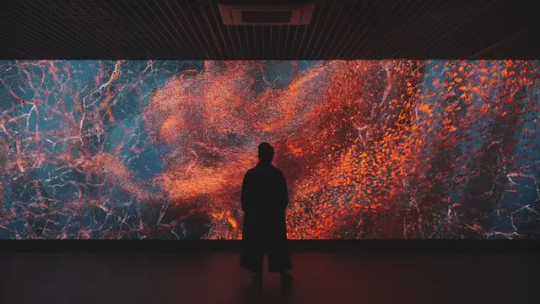

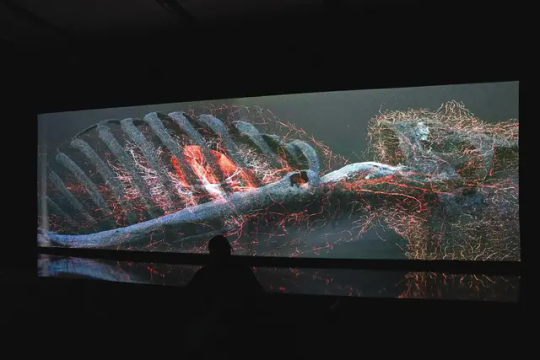
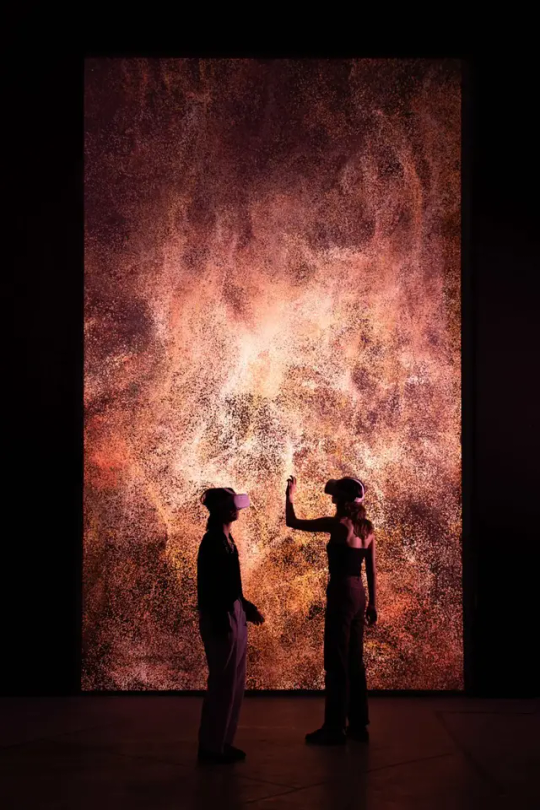

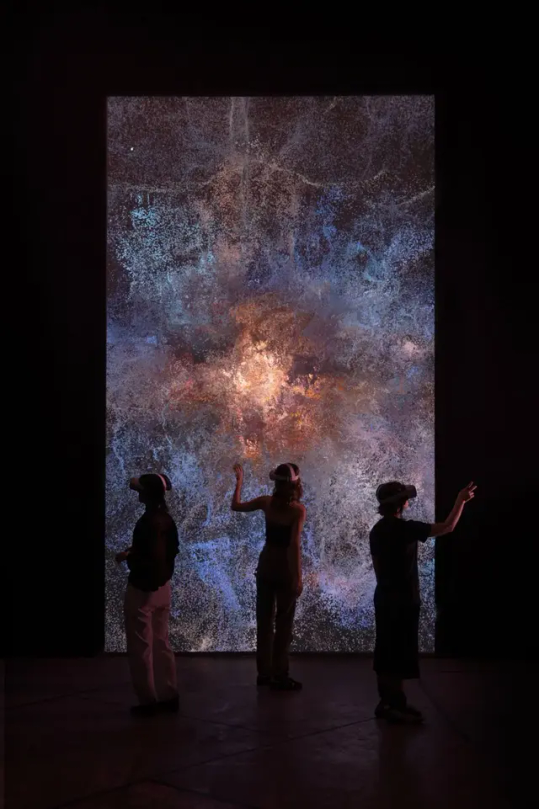
Other works: Sanctuary of the Unseen Forest (2022, film installation with sound)
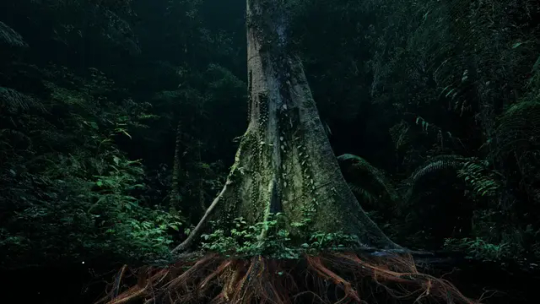
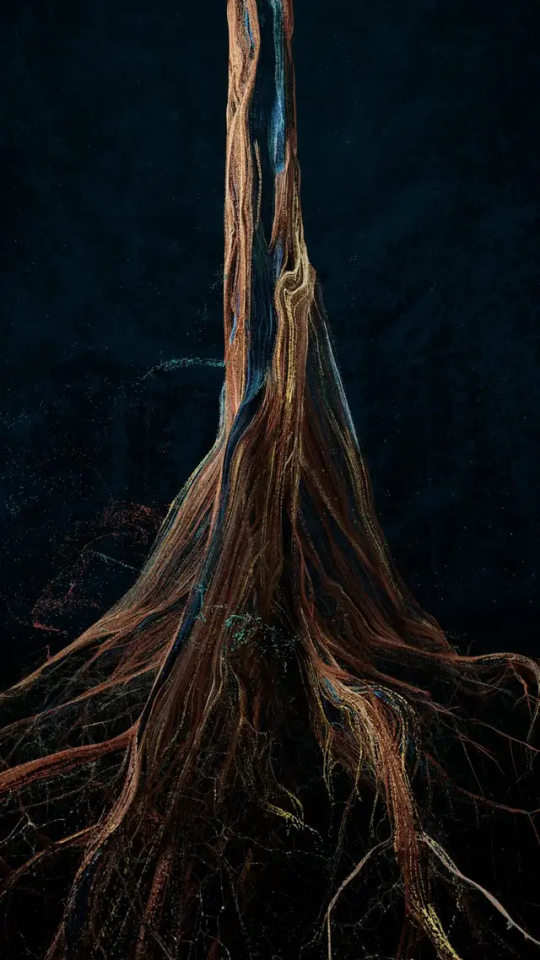
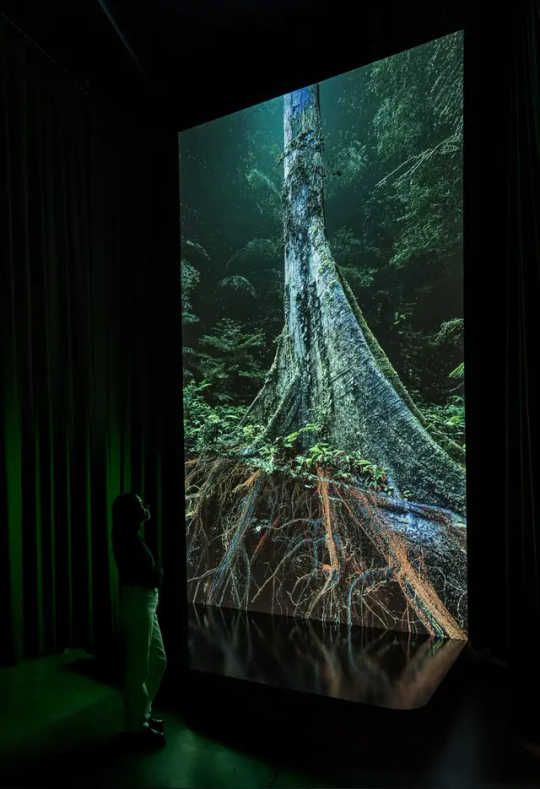
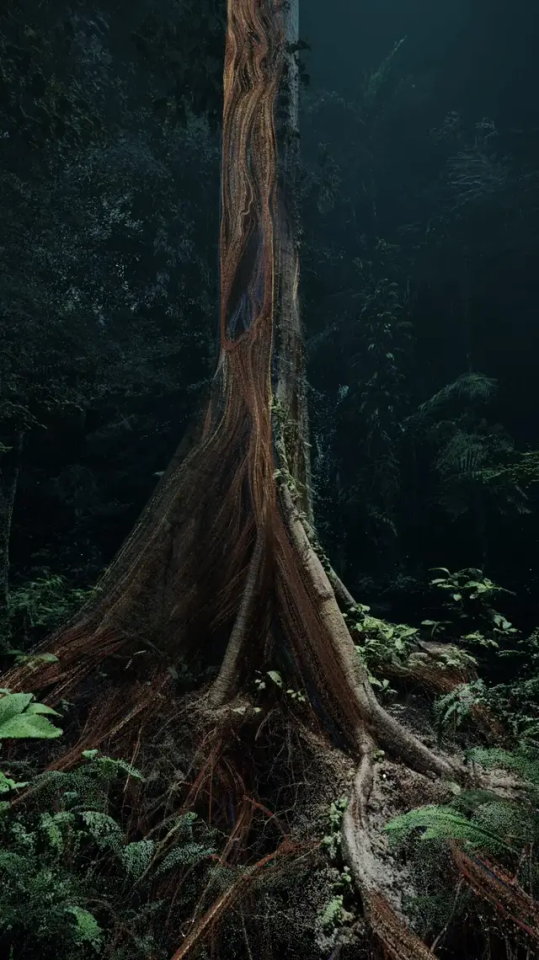
Other works: Seeing Echoes in The Mind of the Whale (2024, film installation with sound)
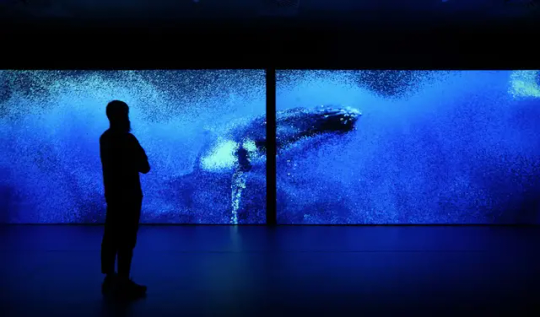
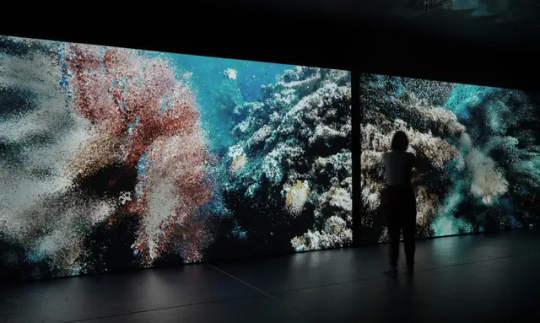
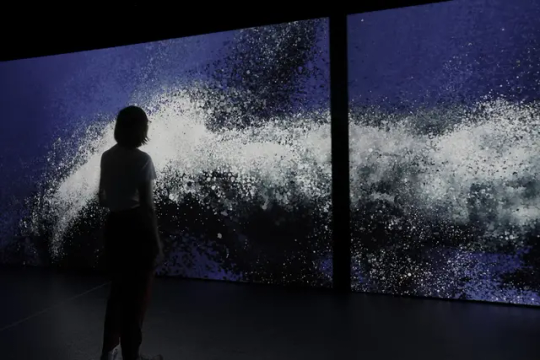


Material research: Interesting quotes from different pages in their website portfolio that could influence my future material research
"The only true voyage of discovery [is] to behold the universe through the eyes of another." - Marcel Proust (found in the page for In the Eyes of the Animals)
"Plants are alive, yet they do not present us with the same impression of life that animals do. Are we, as the victims of plant blindness, simply unable to notice their liveliness, or are they so different from us that we have to invent new ways of seeing and apprehending them?" - Natania Meeker and Antónia Szabari, from the 2019 book Radical Botany: Plants and Speculative Fiction (found in the page for Sanctuary of the Unseen Forest)
Portfolio website:
0 notes
Text
Material Research 3.2: Peter De Cupere's PTDB - Tree Virus (2008) and Olfactory Tree (2010)
Material research: Why drawn to these works?
I was drawn to two key aspects shared by both works:
Merging of botanical art and multi-sensory art
The material approaches
I was also intrigued by how Cupere abstracts contemporary discussions regarding biology, culture, art, and environmental issues through the subjective (and, at times, deceptive) nature of the olfaction experience.
Material research: About the works
Both of these installations were created by Belgian artist Peter De Cupere.
PTDB - Tree Virus was displayed inside of a plastic igloo in Belmonte Arboretum (a botanical garden in the Netherlands). It consisted of an old leafless tree planted into a white ball (material unknown) suspended over a shallow dirt pit, the ball itself coated in an intensely-fragrant mixture of peppermint and black pepper.
The tree also had smaller lumps (presumably made from the same material as the giant peppermint ball) on its branches, which resembled parasitic plants such as mistletoe. Not only did plants play a key role in the olfactory experience (i.e. the old tree and the peppermint-black pepper fragrance), but the installation itself also investigated the concepts of parasitism and hybrid plants.
Olfactory Tree, despite its appearance, is not actually a mossy tree log. A painted sculpture made of latex and epoxy resin, it was modelled after the textures/shapes of different woodland trees.
Its aromas (pine, cedar, mushrooms, grass, damp soil, etc.) add another level of artistic deception. The visual, olfactory and tactile experiences work together materially to blur the line between "natural" and "artificial".
Material research: How do they link to other artist/theory research?
In her chapter discussing the history of smell in art (from Heywood's Sensory Arts and Design (2017)), Verbeek mentioned a 2015 olfactory art exhibition in Villa Rot (Germany). Cupere was one of the artists included in the exhibition.
In researching the materiality of his works, I found similarities between Cupere's olfactory practice and the olfactory practices of other artists I researched (e.g. Anicka Yi, David Haines and Ernesto Neto), who pair the "central sense" (smell) with one of more other sensory experiences (vision, hearing and/or touch).
In an interview with Kornelija Cesonyte (date unknown), Cupere describes smell as simply "another way of communicating", reflected in his material practice.
PTDB -Tree Virus (2008, sculptural olfactory installation): Installation Shots

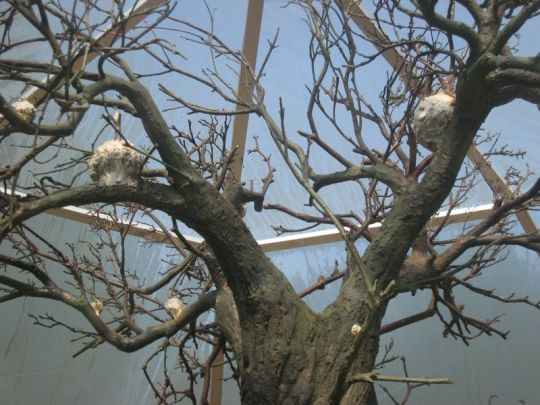
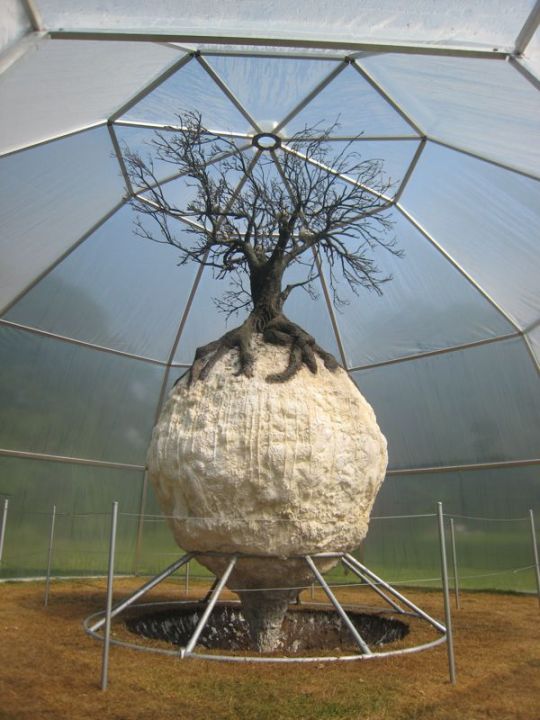



Olfactory Tree (2010, sculptural olfactory installation): Installation Shots







Material research: Notes on other works
As said previously, Cupere explores the sensory experience of smell in a similar way to artists such as Anicka Yi, Ernesto Neto and David Haines.
Often, he pairs smell with organic forms and/or unconventional materials (shown here are only a few examples).
Smoke Cloud (2013) = the audience, invited to walk up the ladder and put their into the cloud sculpture, is met with the smell of air pollutants such as CO2 (a commentary on how air pollution has contributed to climate change)
Garlic Roses (2020) = garlic bulbs and cloves replace the flower-heads of roses, questioning the binary definitions of "pleasant" and "unpleasant" (both in the visual and olfactory senses)
When the air dries out (2022) = herbs and spices (tumeric, cinnamon, paprika, ginger, coriander seeds, chillies, etc.) form a "decorative Persian carpet" (the integral role herbs/spices play in different cultures and cuisines) with a "sandy desert" in the middle (the environmental consequences of trying to feed a growing population)
Other works: Smoke Cloud (2013, sculptural olfactory installation)
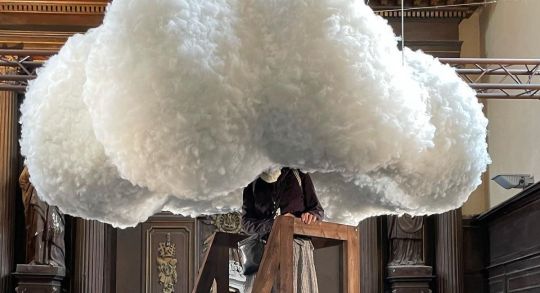
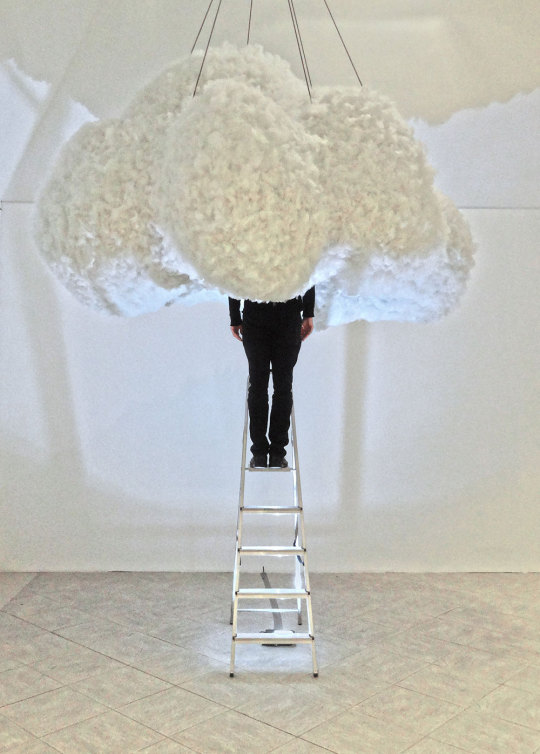
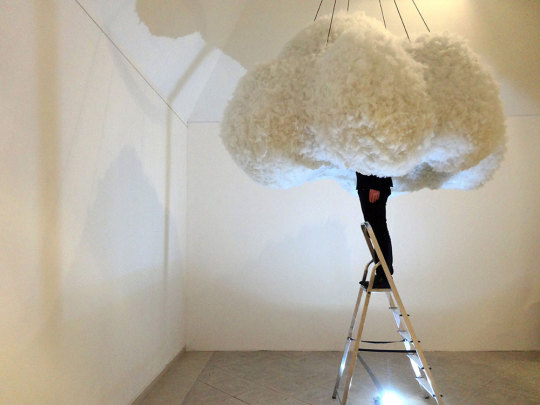
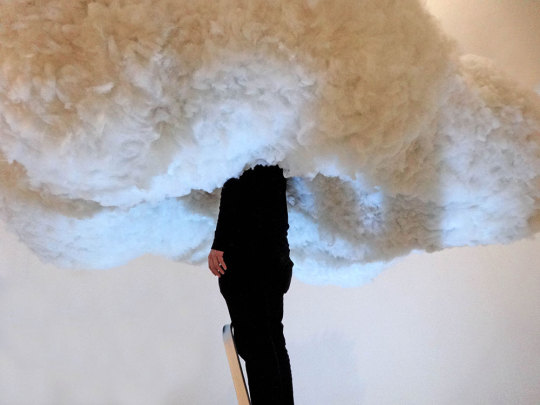
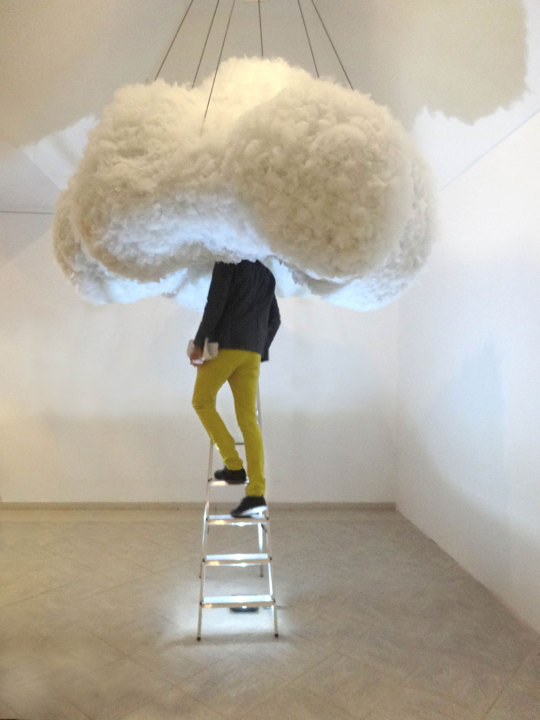
Other works: Garlic Roses (2020, sculptural olfactory installation)
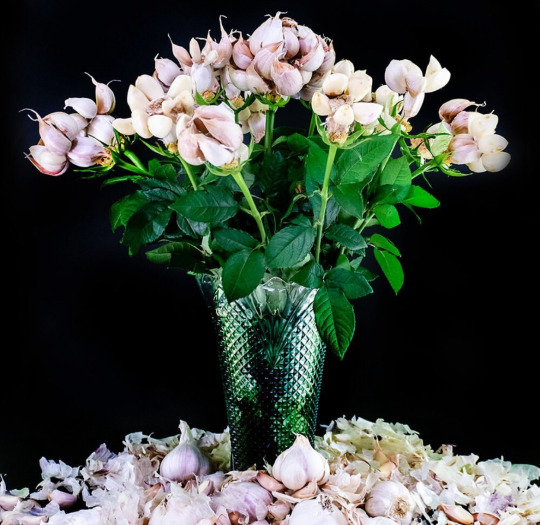
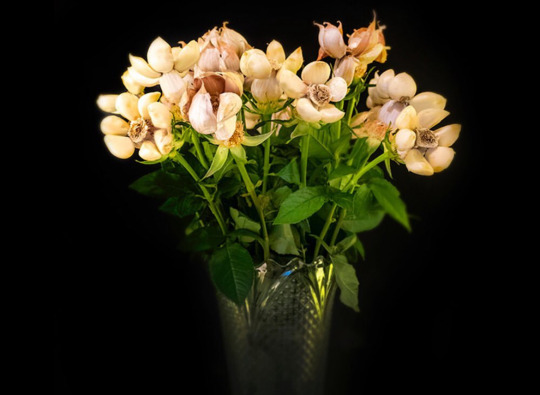
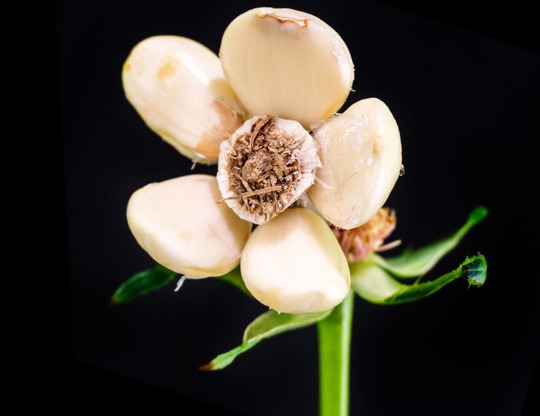
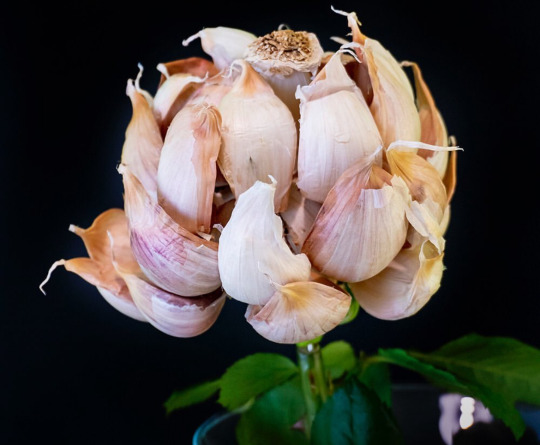
Other works: When the air dries out (2022, sculptural olfactory installation)






vimeo
Material research: Interview with Kornelija Cesonyte (apologies for the quality of the pages as these were found compressed on his portfolio website)
0 notes
Text
Material Research 3.1: Material Case Study - Visit to Beauty Rich and Rare Exhibition (3.1.25, Museum of Sydney)
Material research: Why drawn to this work?
I am drawn to this work because of the ways in which it visually and narratively presents the legacy of Joseph Banks' and Sydney Parkinson's documentation of plants.
The most notable aspects of this were the animation of the botanical illustrations, a case study relating to edible/medicinal plants discovered in Australia during the HMS Endeavour's voyage, and the segment discussing the collaborative process of making botanical illustrations during the late 18th-century.
Material research: About the work
Beauty Rich and Rare is a 15-minute, 180° film installation created by AGB Creative and commissioned by the National Library of Australia. It was previously exhibited in locations such as the National Library of Australia (2018-2019), the Smithsonian Museum of Natural History (2020), and Museum of Sydney (2024-2025).
The film details the history of Joseph Banks, Sydney Parkinson and their contributions to science, particularly the latter's botanical illustrations of Australian flora, during James Cook's voyage (1768–1771) on the HMS Endeavour.
2D motion graphics was used to animate the botanical illustrations and other historical documentation from the HMS Endeavour's voyage.
Material research: How does it link to other artist/theory research?
This work primarily relies of the sensory experience of vision (with some sound in the form of music and voice narration).
However, the references to the history of botanical art (visually and in terms of the information presented) are ideas that I could explore materially because part of my own research also explores the diverse processes and legacies of botanical art.
This work also linked to the ideas mentioned in both Ryan and Ben-Ari's discussions of its materiality, history, and often-neglected importance (contemporary and traditional respectively).
Screencaps: Colour-swatches for Joseph Banks botanical illustrations
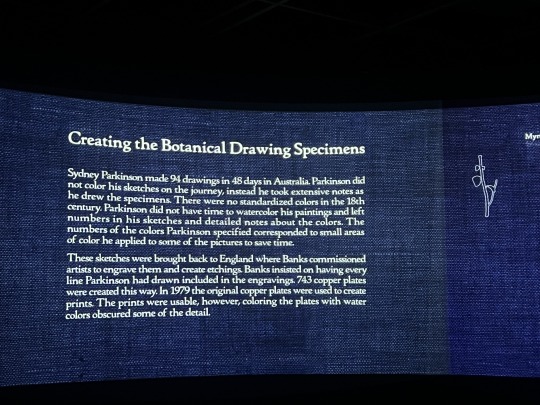
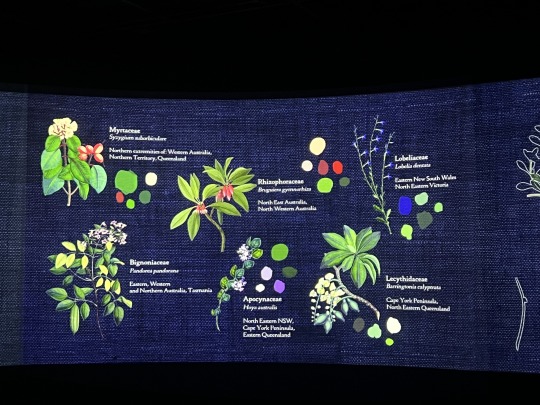
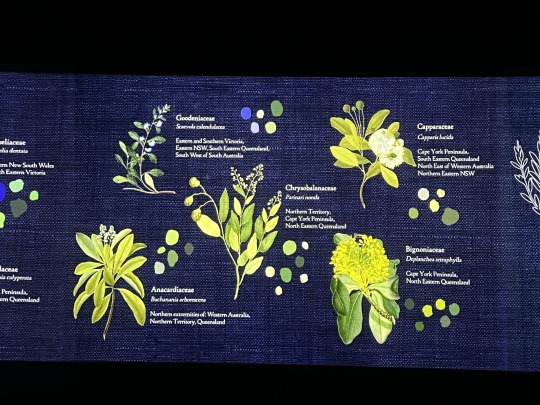
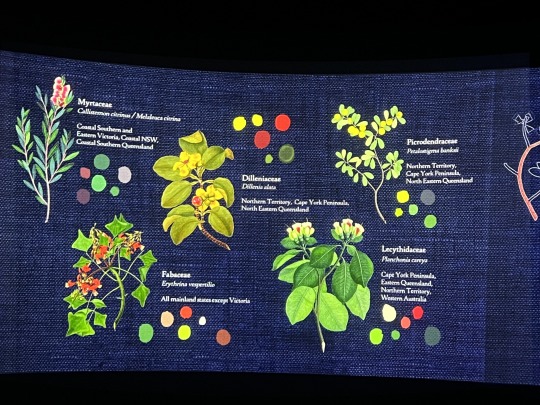
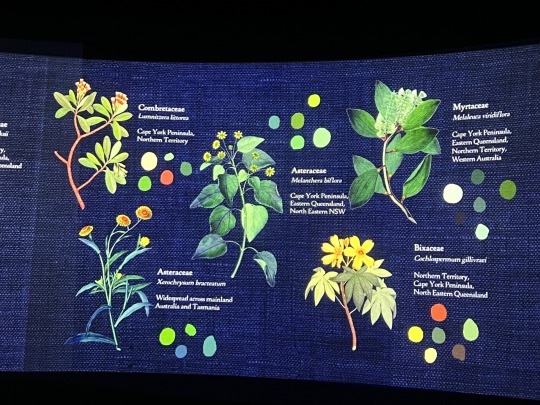
Screencaps: Case study referencing one of many medically-significant plants collected/documented by Joseph Banks
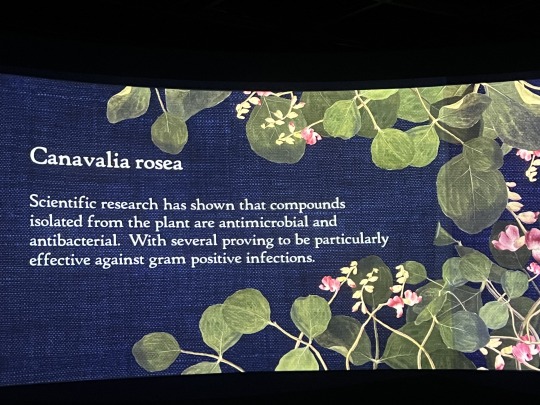
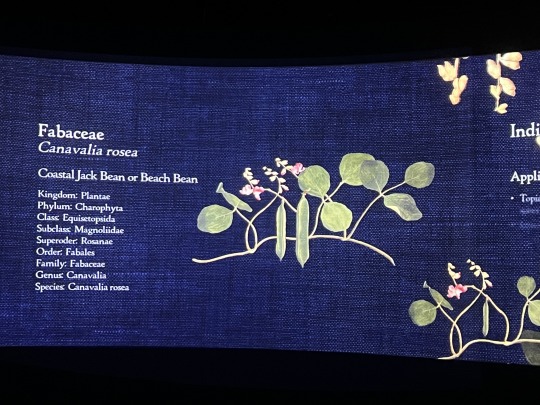
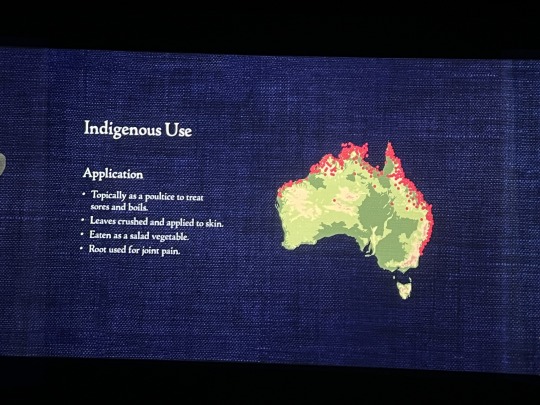
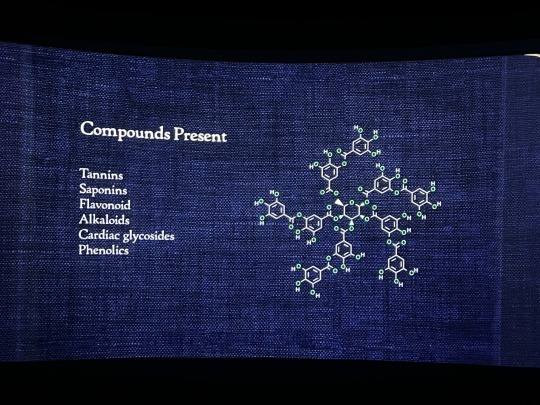
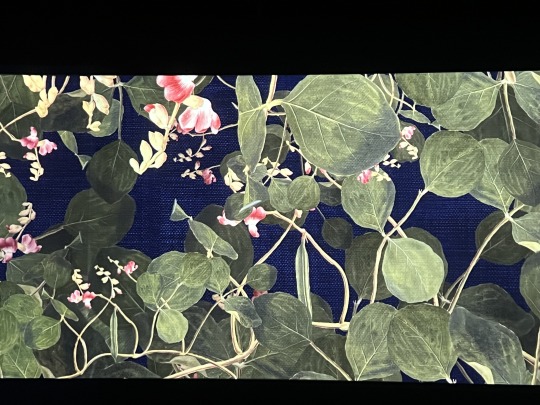
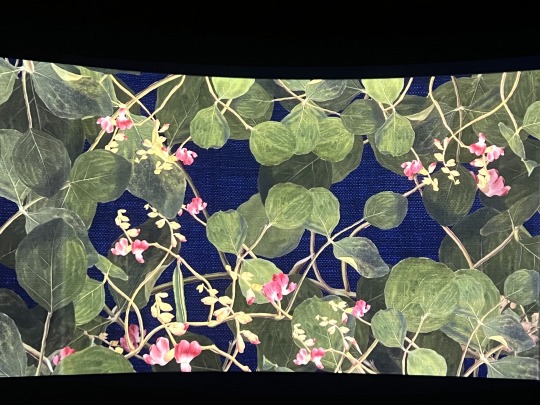
Other screencaps (focusing on the botanical ones for keeping to the theme)
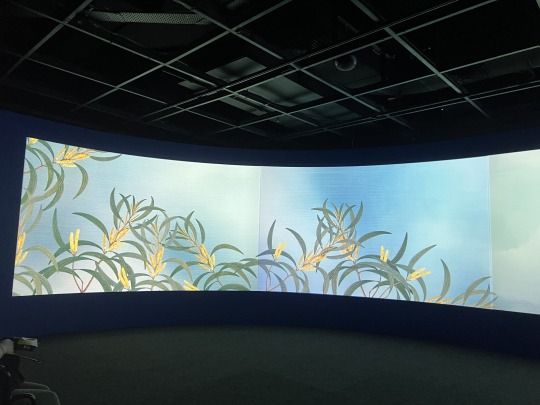
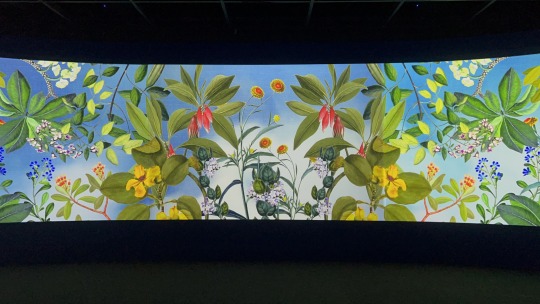
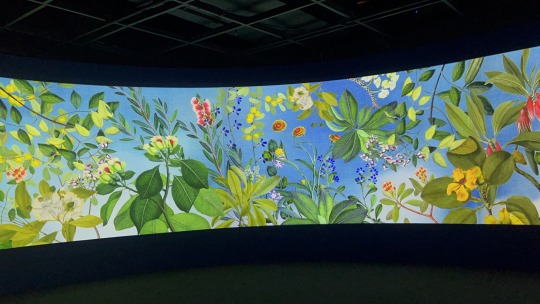
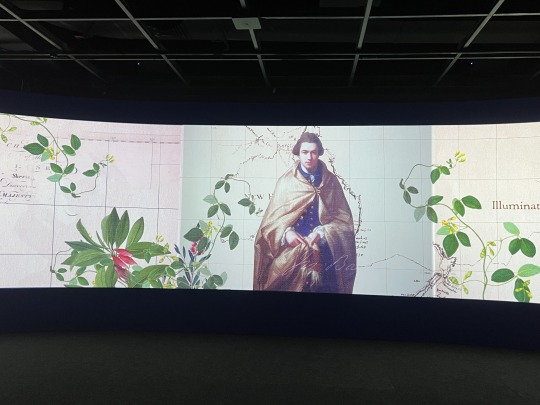
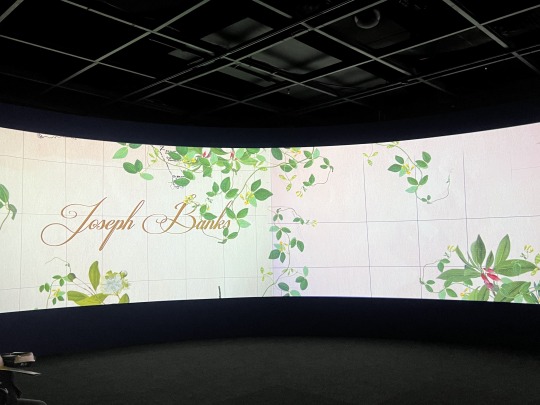
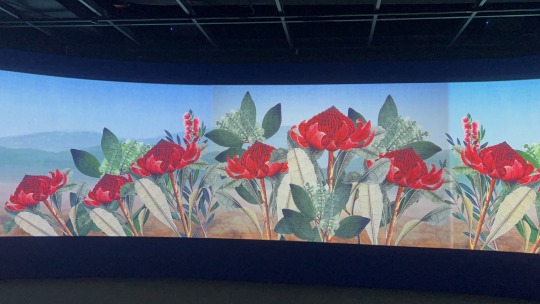
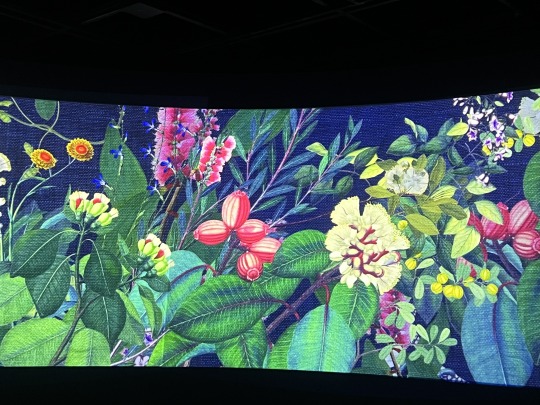
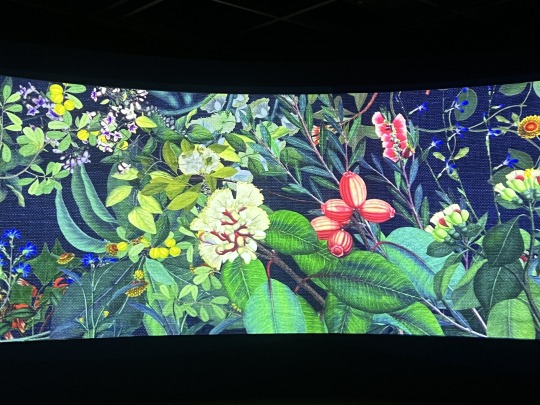
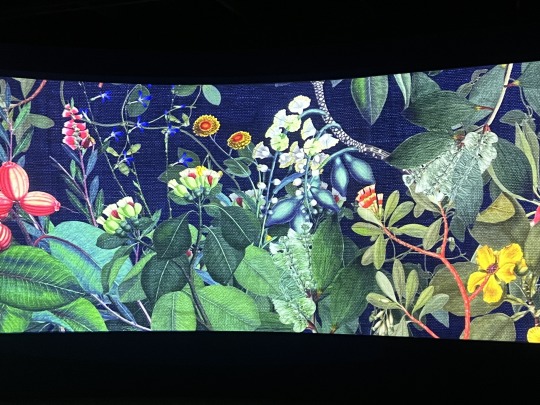
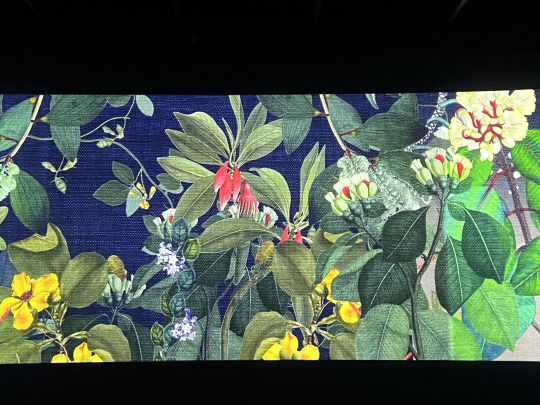
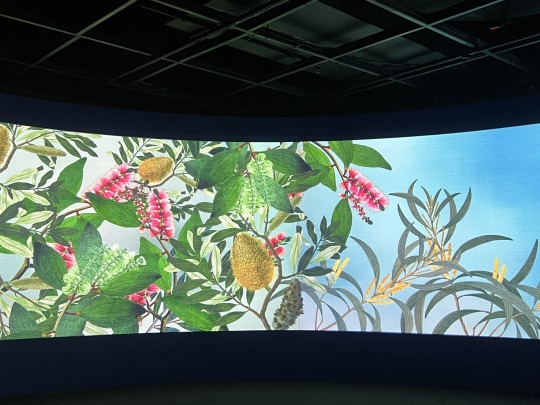
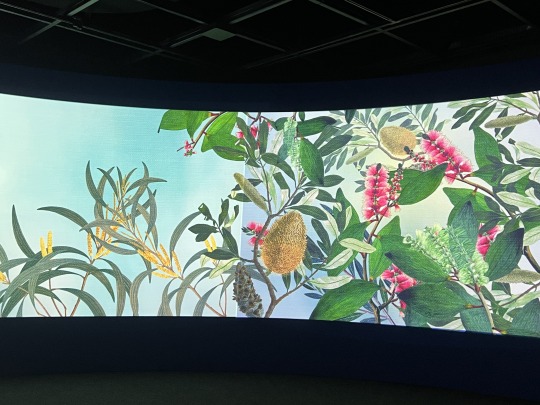
youtube
0 notes
Text
Hello, Portal fandom! (2)
Recently, I did a poll for a Portal fandom zine/collab to celebrate Portal 2's 15th anniversary next year.
Well, the people have certainly spoken... ;)

With this in mind, I may or may not announce something in a week so have two teasers in the meantime.


13 notes
·
View notes
Text
Material Research 2: Reinstallation and experiments with Rhythms of Nature (25.3.25)
Notes: Aims of this material experiment
The main focus was experimenting with "fragmenting" projected film.
Therefore, the primary sensory experience for this experiment is vision.
Notes: The materials and process
I attempted to revise the installation of Rhythms of Nature (2024) by changing the layout of the projection (with and without fabrics hanging on the studio's ceiling rigs).
However, due to incidents beyond my control, I could only do two installation layouts (see below) for the duration of the session that day.
Notes: Reflection and observations
If I had more time, I would have experimented with different arrangements (e.g. some with more space in between more fabrics)
THAT SAID: If I go with projected film as part of my work, simpler is best (i.e. stick to projected film as is for the time being).
After all, I'm not remaking Rhythms of Nature - this is a separate project.
Original installation layout (6 fabric strips, 2 rows with 3 each) - see for comparison:
Without fabric strips:
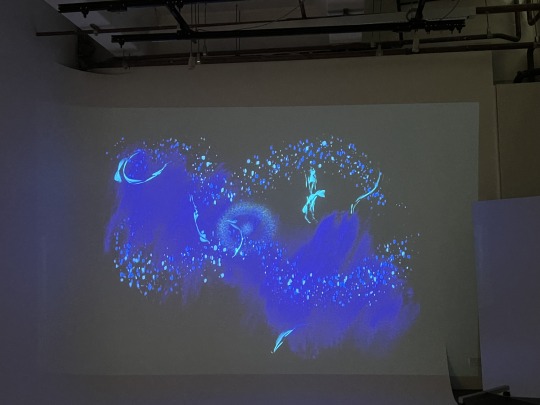
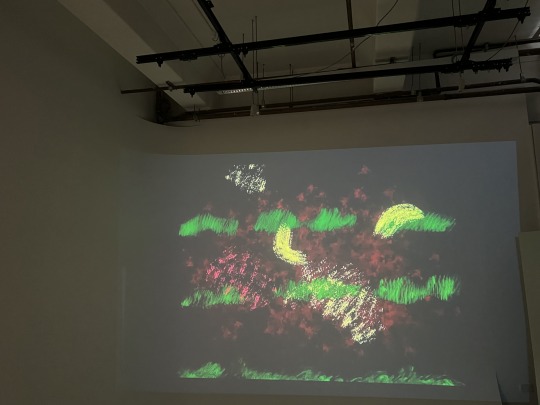
With 2 fabric strips only (1 per row):
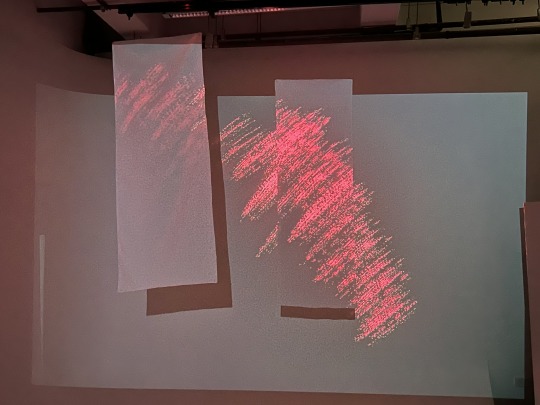
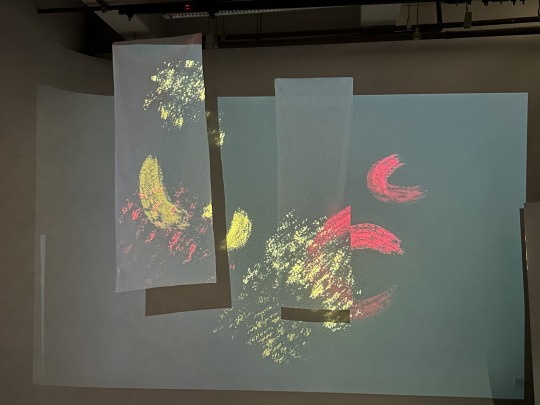
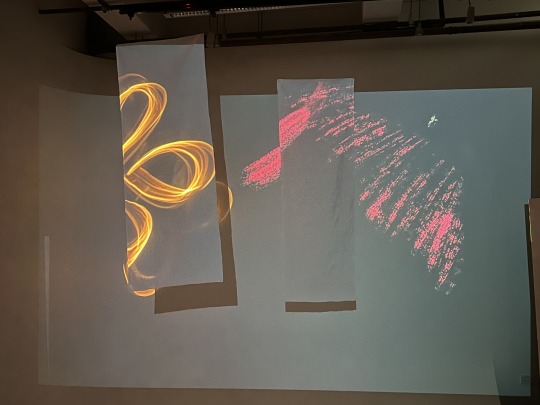
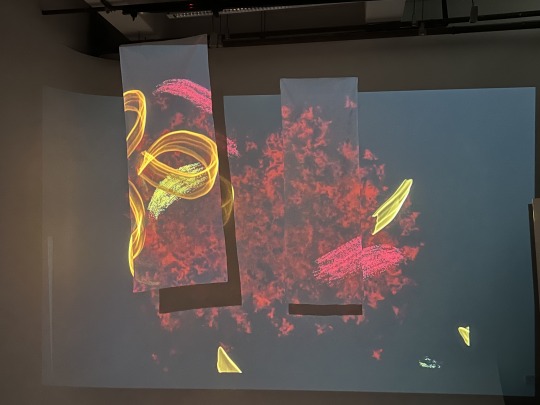
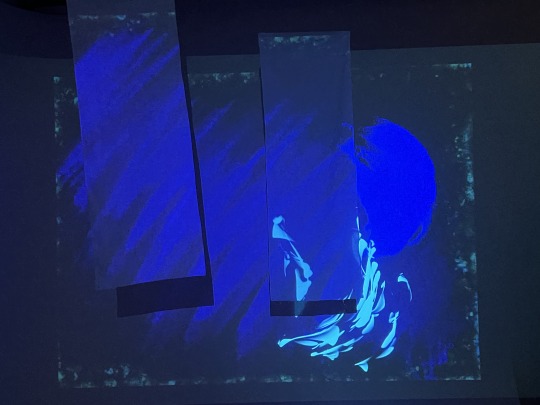
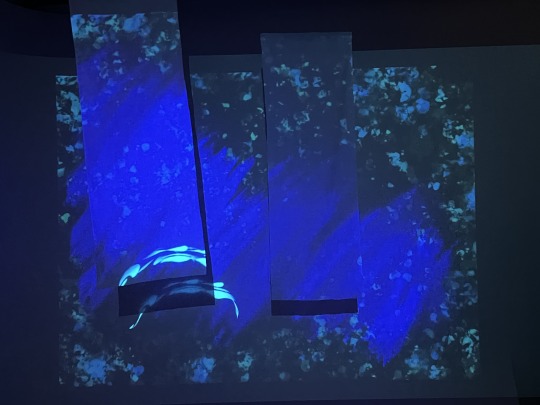
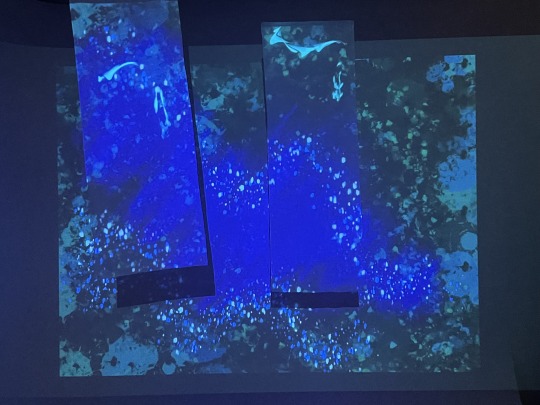
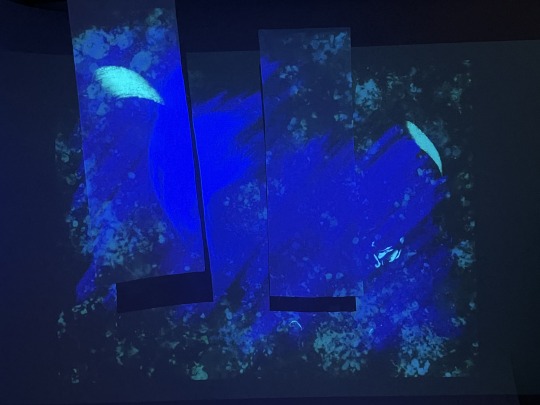
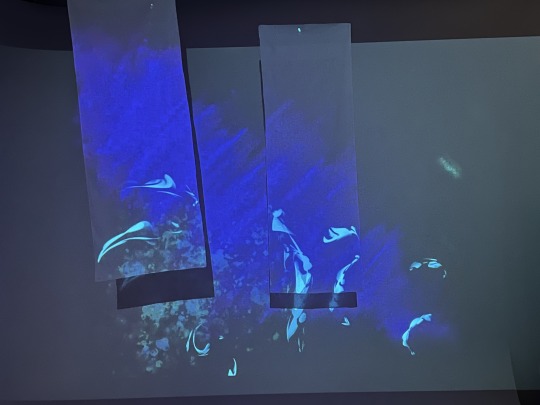
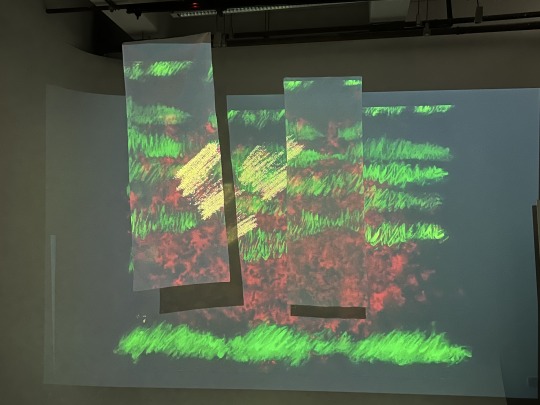
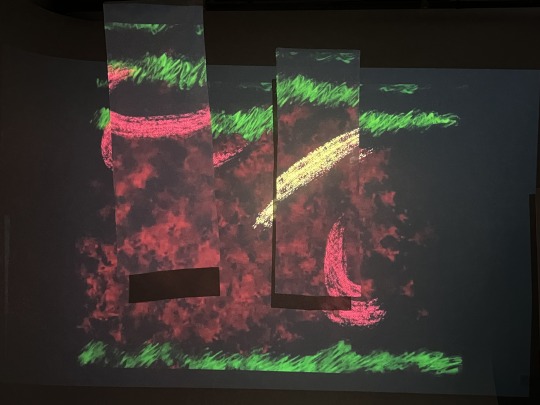
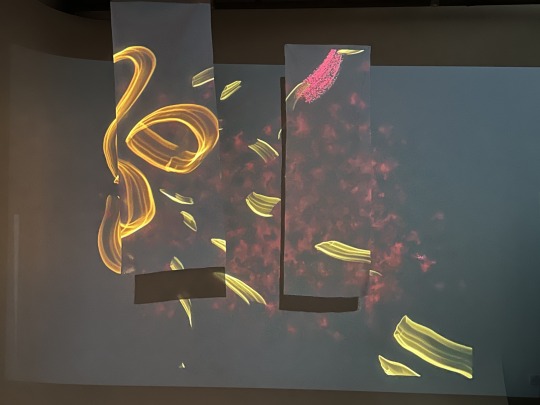
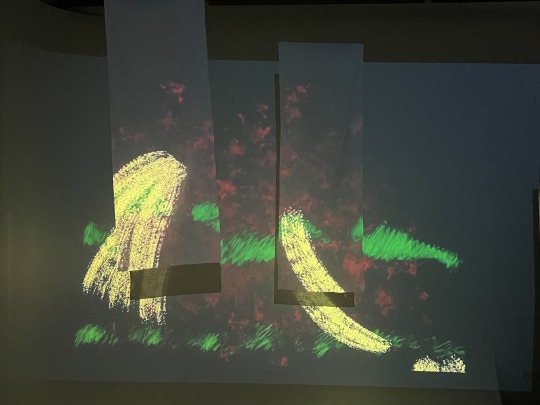

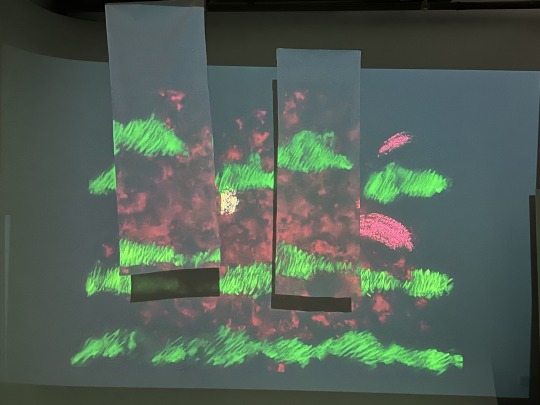
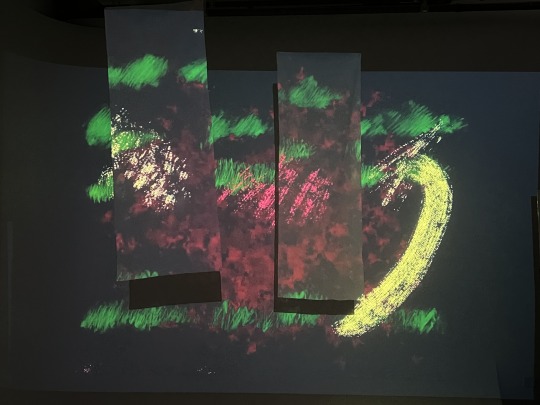
#sca projects#aa hons project herbasensorium#aa sca hons research#aa sca hons process documentation#aa sca hons material experiments
0 notes
Text
Material Research 1: Nature Prints 2.0 (24.3.25)
NOTE: The following print tests were inspired by a couple of prints I made in 2024 as part of a workshop run by Keg De Souza (linked below for reference).
Notes: Aims of this material experiment
The main focus was experimenting with composition, textures and imprints (visual vs. textural).
I also wanted to revisit basic monoprinting processes, since I hadn't done much printmaking since 2023 (not counting the Keg De Souza workshop in 2024).
Notes: The materials and process
The plants I used were collected in my local neighbourhood.
For the actual prints, I primarily used cartridge paper (with a couple of prints using batiste fabric).
One colour (green) of printing ink was used for test purposes - I may consider more than one colour (for both visual and textural imprints) or no colours (for purely tactile imprints).
Notes: Reflection and observations
When discussing "imprints", I am referring to both the visual AND the textural imprints these plants produced during the monoprint process.
Both kinds of imprints will be important in informing my approaches to the multi-sensory aspect of my project.
Cartridge paper produced a more 'solid' textural imprint (most apparent in more 'solid' plants like the coastal banksia leaves, the 'centre' of the sunflower (where the disc florets are located), the eucalyptus leaves and the ferns).
Batiste fabric didn't always produce a very obvious textural imprint, but the visual imprint was usually present (varied depending on how much ink was used) with a degree of translucency (due to the nature of the fabric).
Interestingly, the small, fleshy flowers of the grevillea were arranged in way that created an illusions of layers in the print itself.
The grevillea flowers also exuded a watery nectar(?) while printing, which reacted with the ink and the paper/fabric to create 'painterly' visual imprints - this was most apparent in the batiste fabric.
Similarly, the sunflower disc florets were secreting a sticky, almost waxy nectar, which gave the centre of the print a "rougher" texture.
What plants worked the best for monoprinting (imprint-wise): Sunflower, grevillea floral spike and coastal banksia leaves
What plants have a lot potential to work in printmaking, but the quality of the printing was not consistent in this experiment (imprint-wise): Ferns, eucalyptus leaves, magnolia petals, crepe myrtle leaves and grevillea leaves
What plants did not work for monoprinting (imprint-wise): Grevillea and magnolia seedpods (perhaps there is an alternative way to print textures from more three-dimensional plant matter like seedpods?)
What if I tried translating the tactile monoprints into animated forms (e.g. grevillea)?
How could I potentially do "textural monoprints" without any ink at all (perhaps a texture medium like gesso could work on sturdier materials like cartridge paper)?
Monoprint Batch 1.1: Coastal banksia leaves and magnolia petals with magnolia and grevillea seedpods
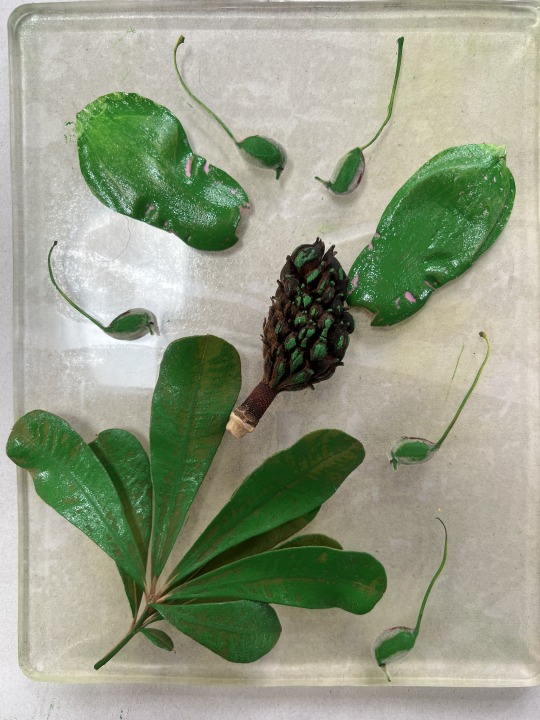
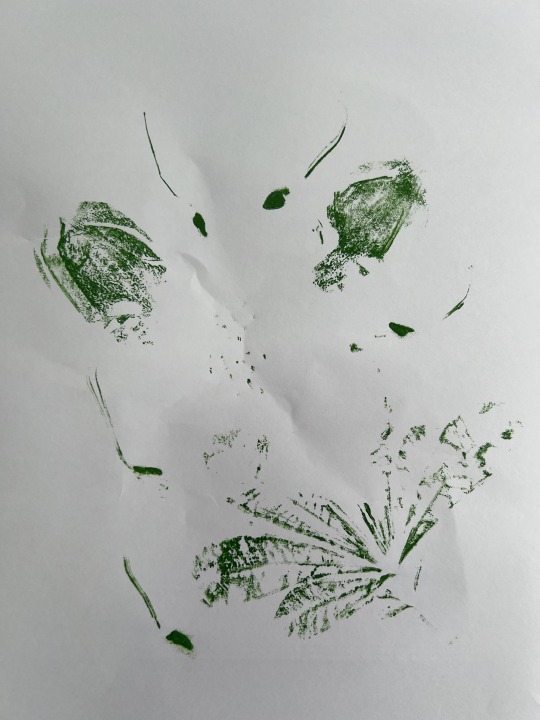
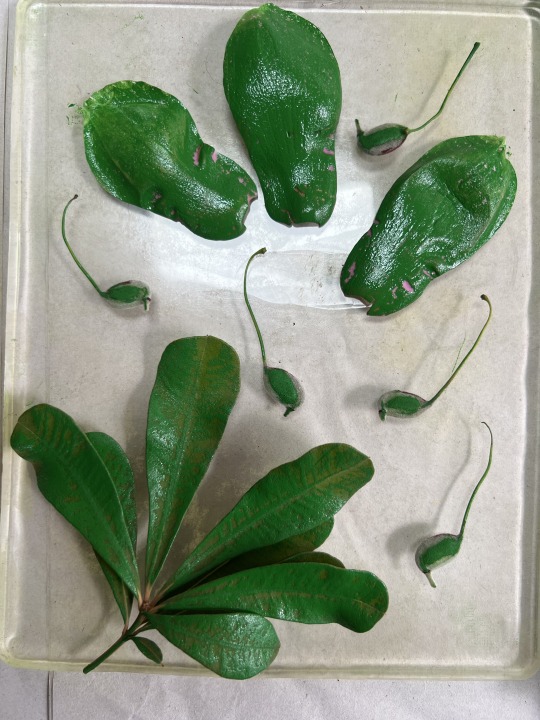
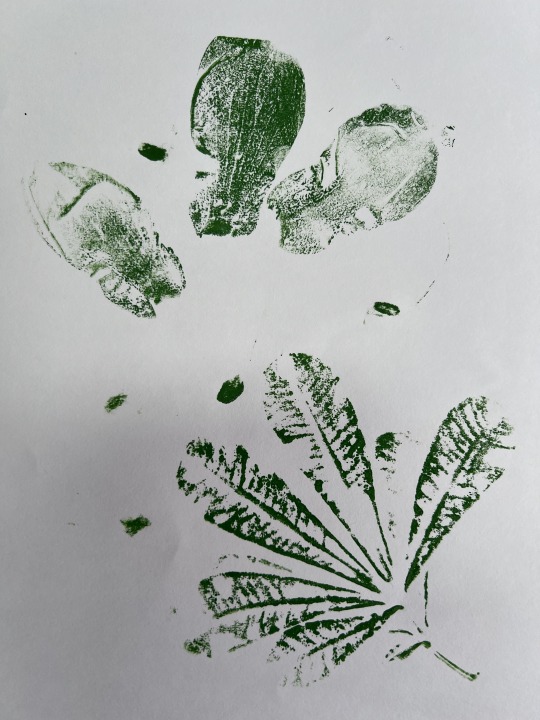
Monoprint Batch 1.2: Coastal banksia leaves and magnolia petals
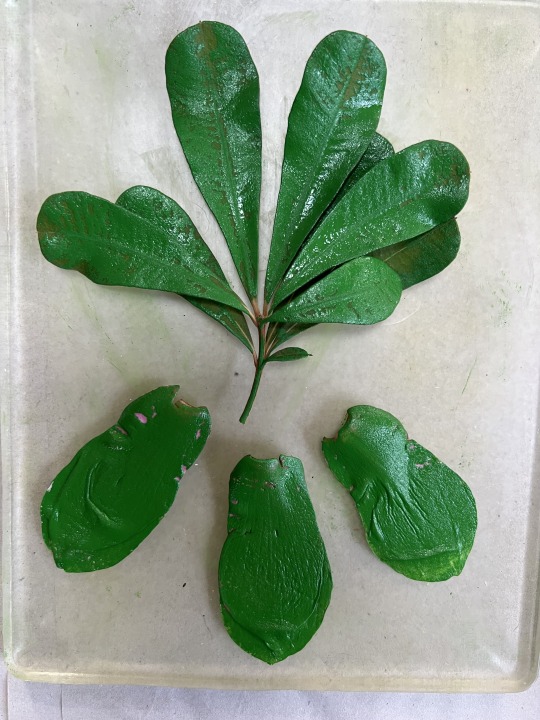
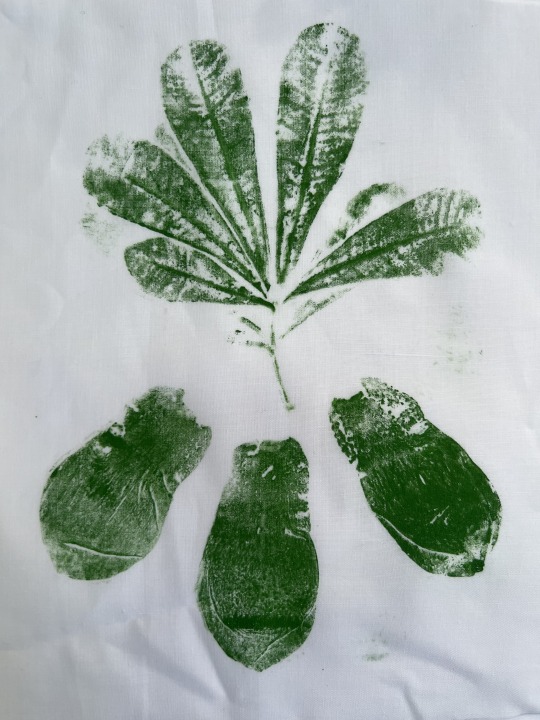
Monoprint Batch 2: Sunflower
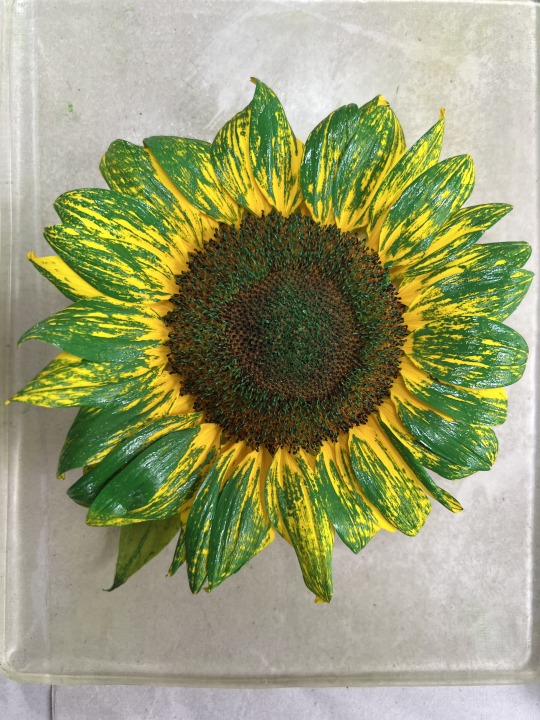
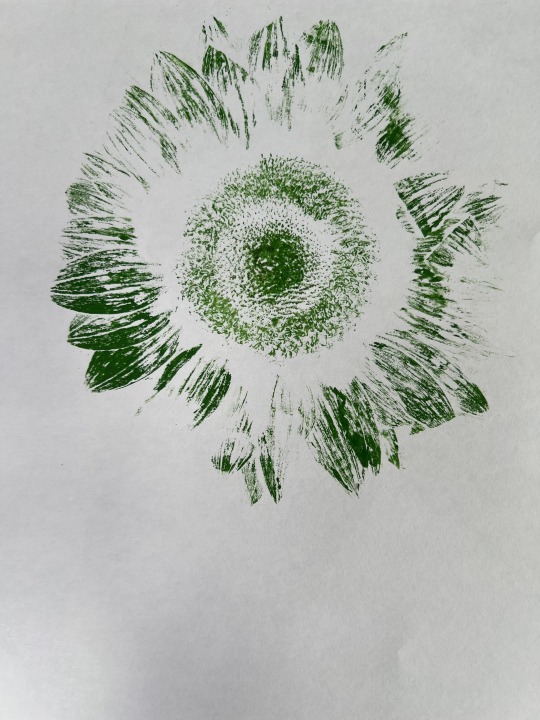
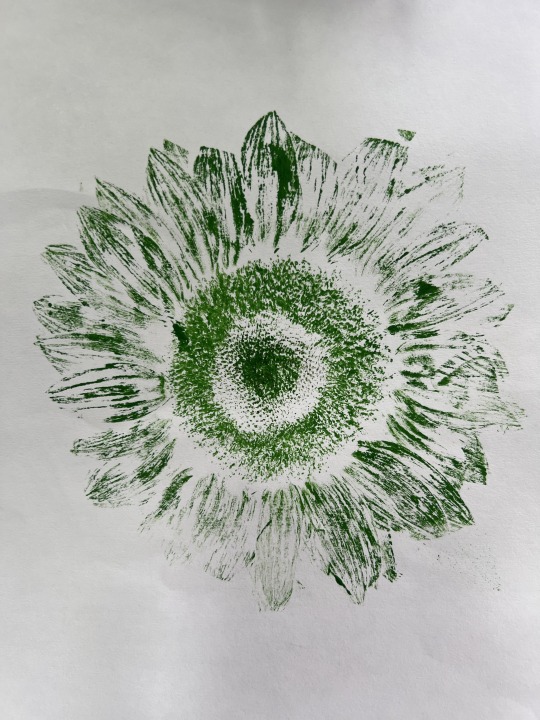
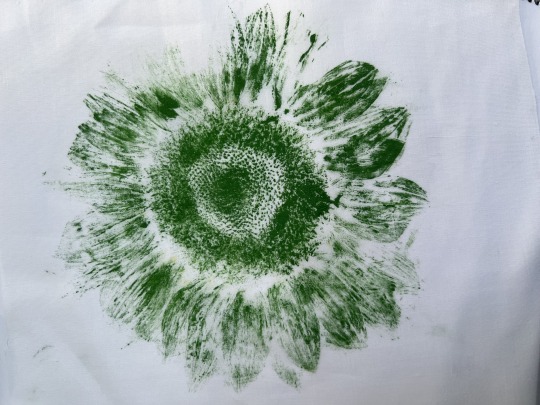
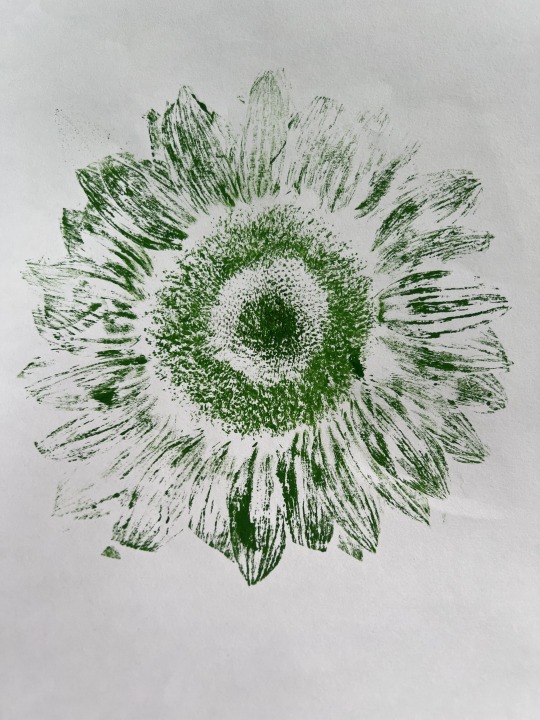
Monoprint Batch 3.1: Eucalyptus leaves and ferns
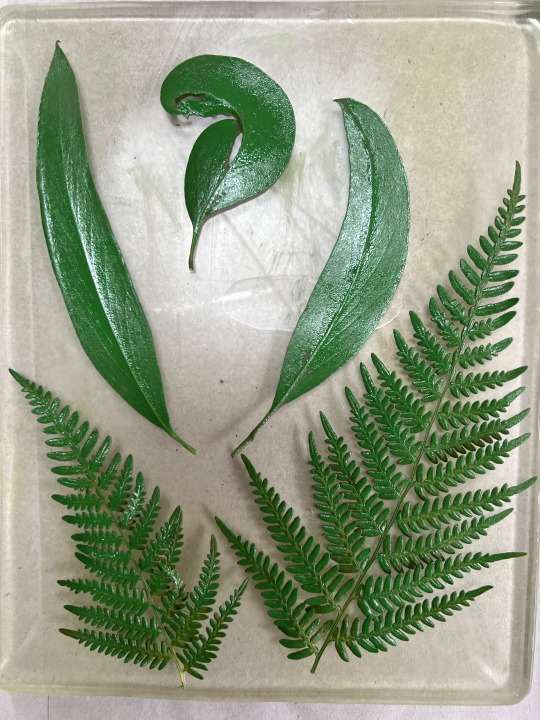
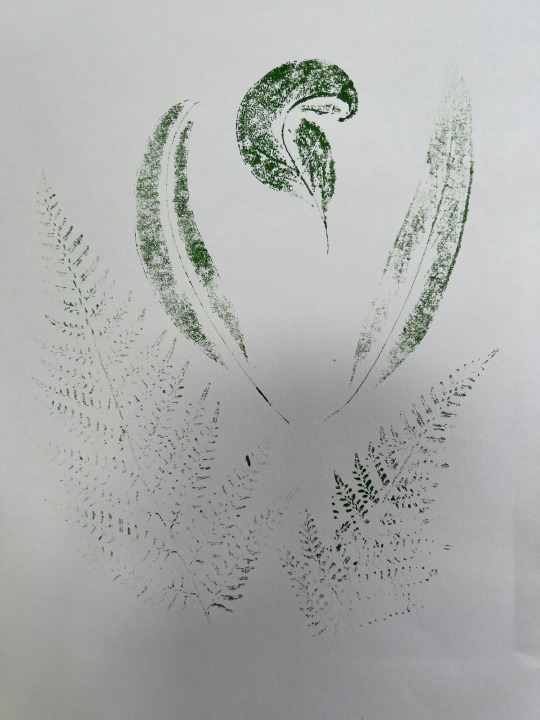
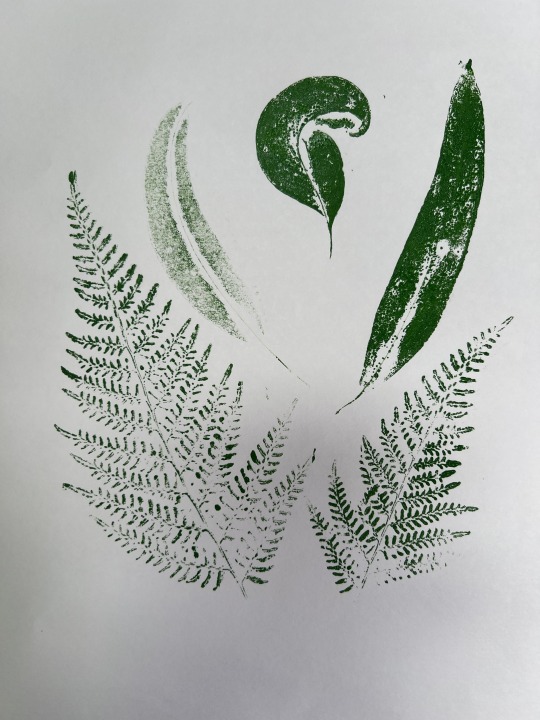
Monoprint Batch 3.2: Eucalyptus leaves and ferns with crepe myrtle/grevillea leaves
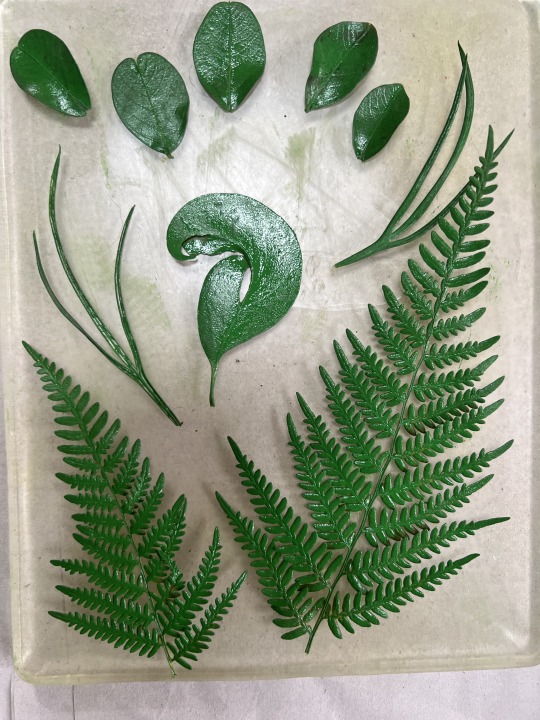
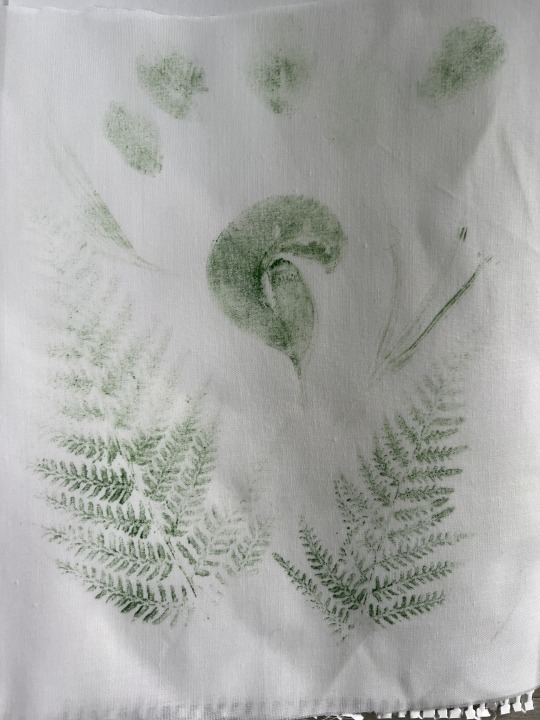
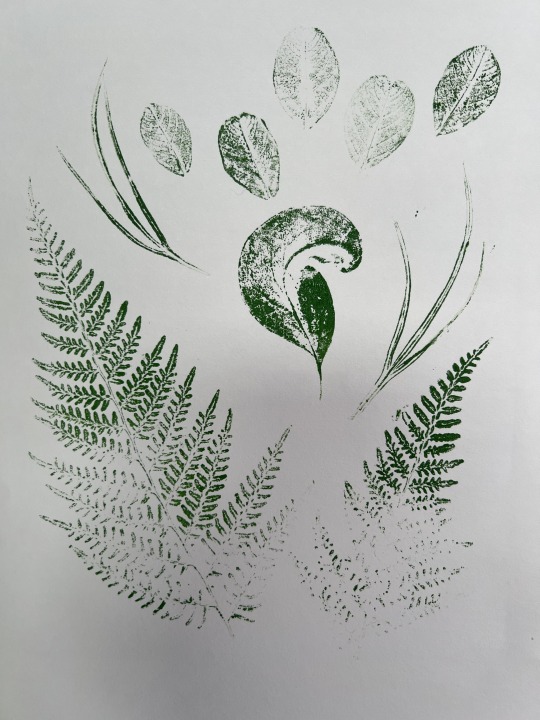
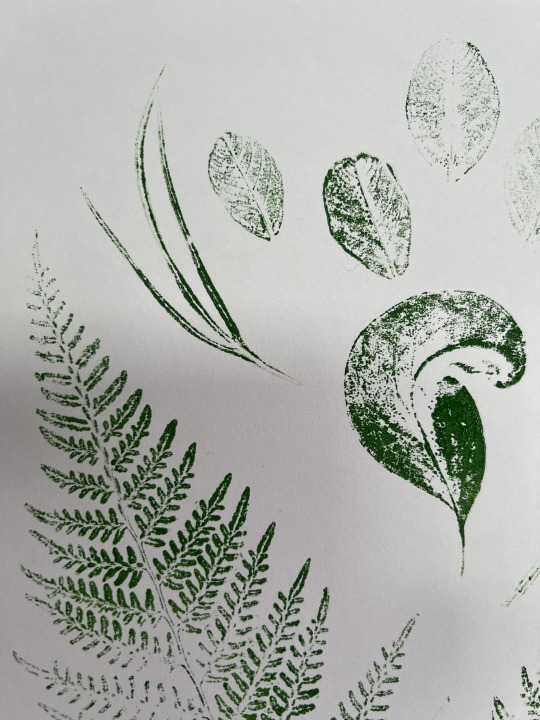
Monoprint Batch 4.1: Grevillea
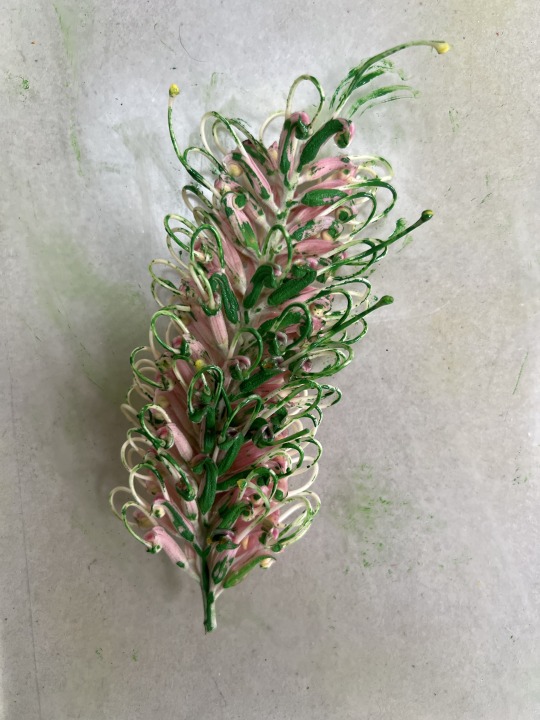
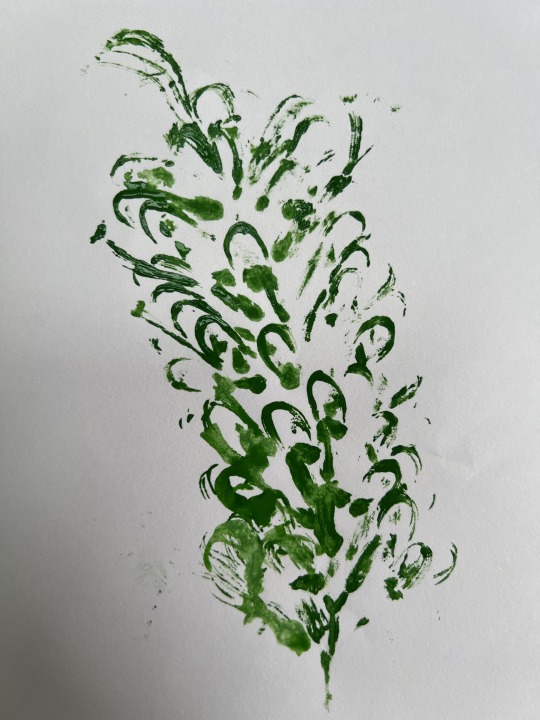
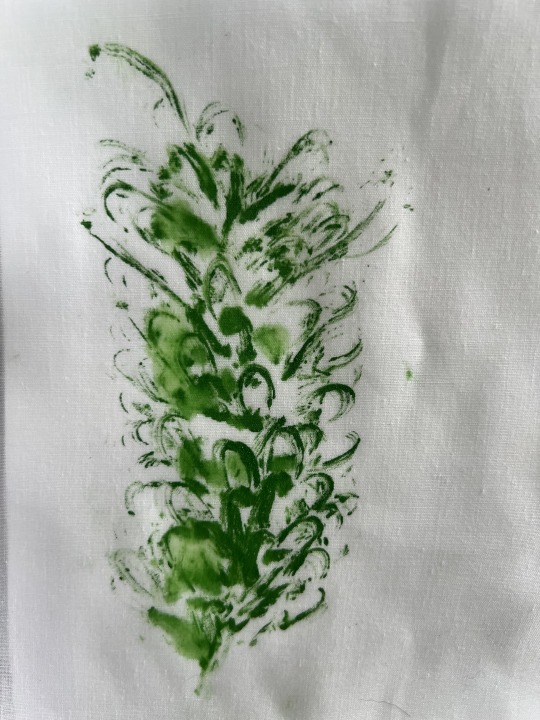
Monoprint Batch 4.2: Grevillea with coastal banksia leaves
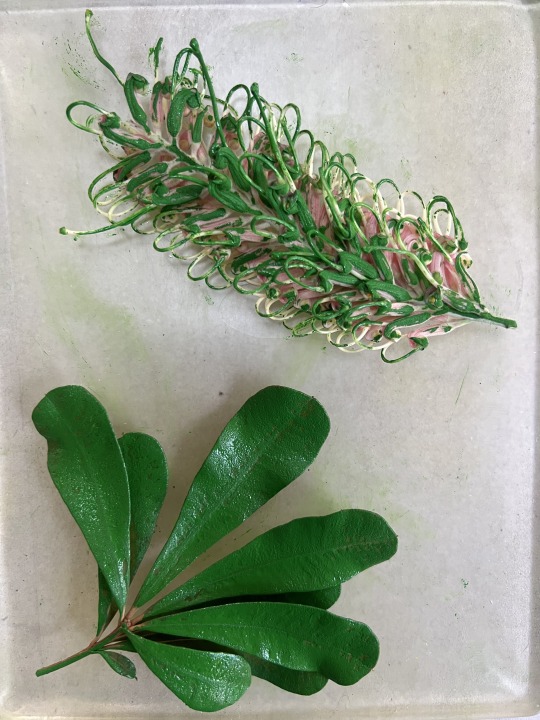
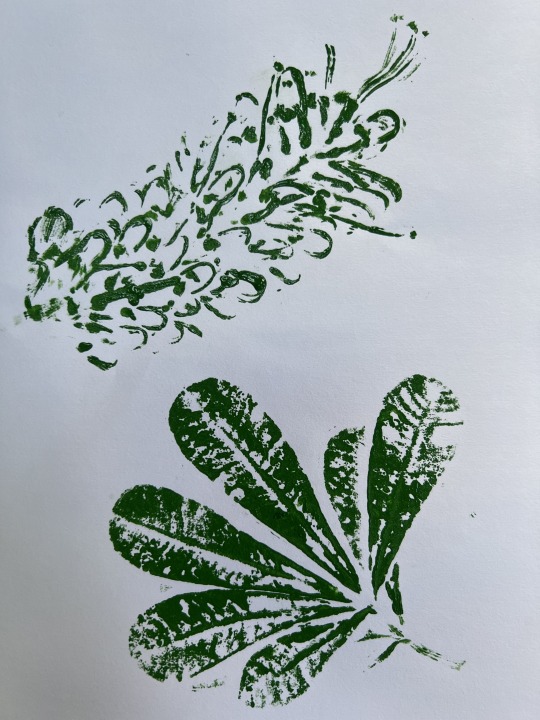
#sca projects#aa hons project herbasensorium#aa sca hons research#aa sca hons material experiments#aa sca hons process documentation
1 note
·
View note
Text
Research readings 3.5: Elia T. Ben-Ari's Better than a thousand words: Botanical artists blend science and aesthetics (1999)
History, importance and material processes of botanical illustration
"But beauty need not suffer in the pursuit of science. Indeed, [Michelle] Meyer notes, the botanical artist's objective is "to in some way bring the beauty of the plant into that drawing and painting.""
Gill Saunders: "The illustrations stand for the thing itself, which is ephemeral, fragile, and often unable to survive removal from its original environment."
"Botanists and naturalists often worked closely with artists who could provide accurate and detailed studies of plants in the field and specimens brought back from faraway lands."
"Why the current renaissance of botanical art? Meyer cites the increased popularity of gardening and a renewed interest in the environment. "People are more and more interested in or missing some kind of a connection with the natural world, and there's tremendous appeal to collecting [the type of] art that brings that to them.""
Objective/scientific history of botanical art
Objectivity vs. subjectivity: "The botanical illustrator's ability to closely observe and clearly record detail is a key factor in ensuring the continued survival of this art form. "A camera can't do this work, but an illustrator can, and in that sense what I'm doing hasn't changed since Albrecht Diirer's time," [Mary Jane] Spring says. "I'm still looking at the object, and, by creating an illusion on the paper of what I'm seeing, I'm showing exactly what the researcher wants to see.""
Wilfrid Blunt and William T. Stearn: "You can set a good architectural draughtsman to draw a flower... But unless he loves what he is drawing, unless he knows the flower in all its moods, in all the stages of its development, there will be something lacking in his work."
"The plants drawn and painted by botanical artists may be live plants in their natural habitat, such as [Margaret] Mee depicted, or plants growing in a greenhouse or brought into the artist's studio. ..."You have to reconstruct the plant as though it [were] alive again," [Alice] Tangerini explains."
The purposes of botanical art are not only aesthetic, artistic, educational and taxonomic - they are also crucial in identifying edible, medicinal and other useful plants (e.g. Russell Marker's discovery of a botanical illustration of a species of Mexican wild yam - which contributed to the development of the control birth pill), identifying poisonous plants to avoid, and for promoting environmental conservation.
Ongoing botanical legacy of plants: "Until we describe the last species of plant and animal on the planet," [John] Kress says, "I don't see [botanical artists'] importance being diminished."
1 note
·
View note